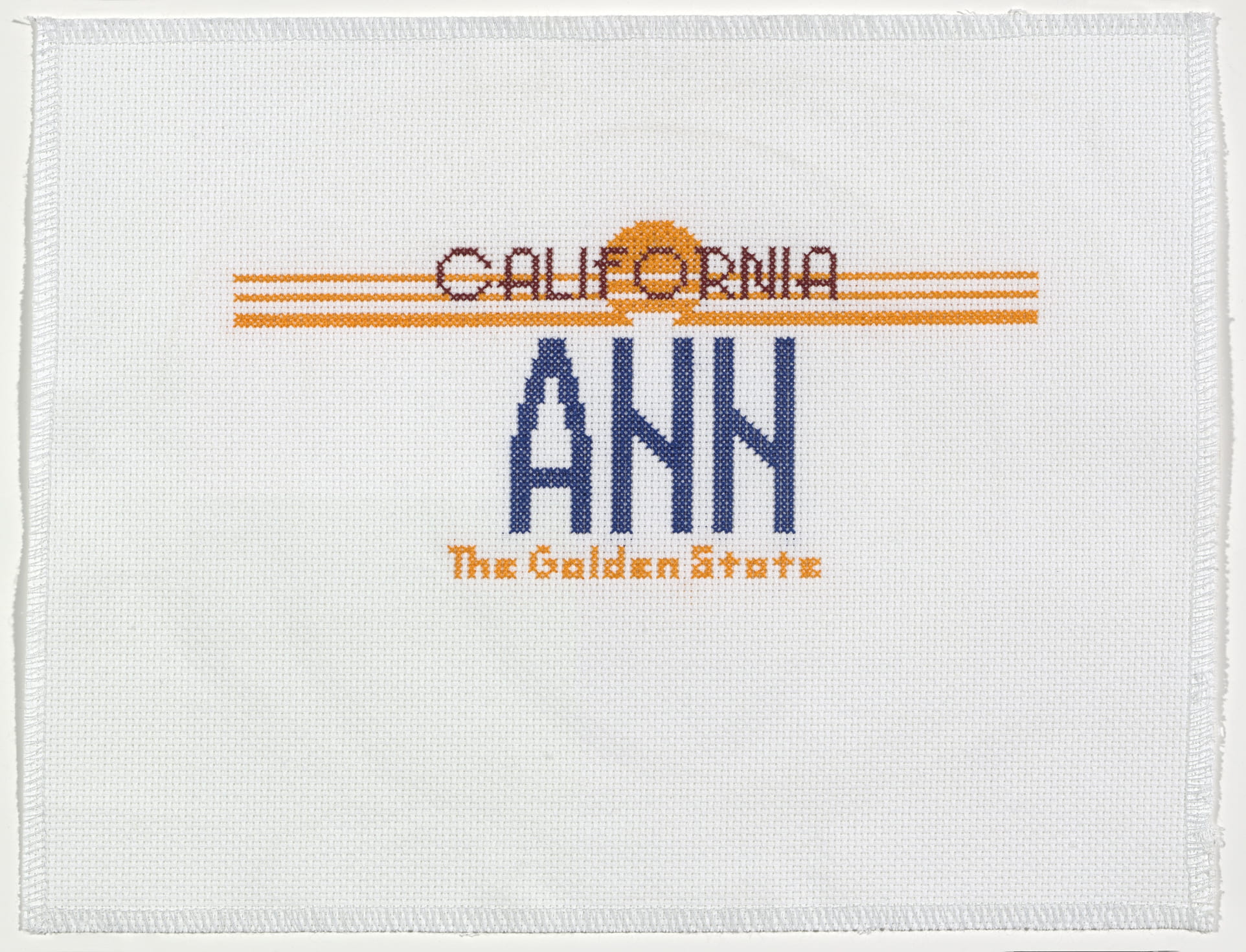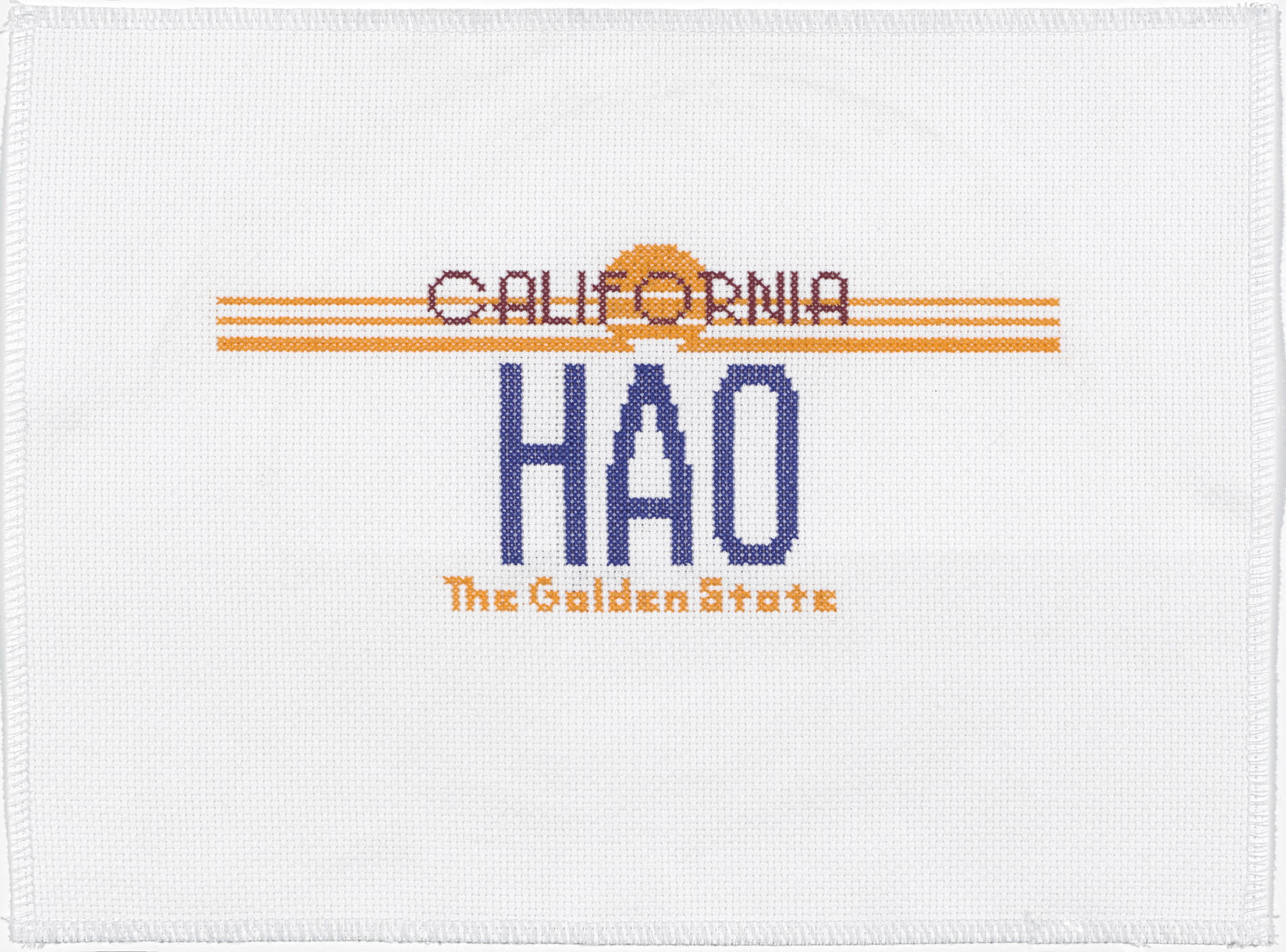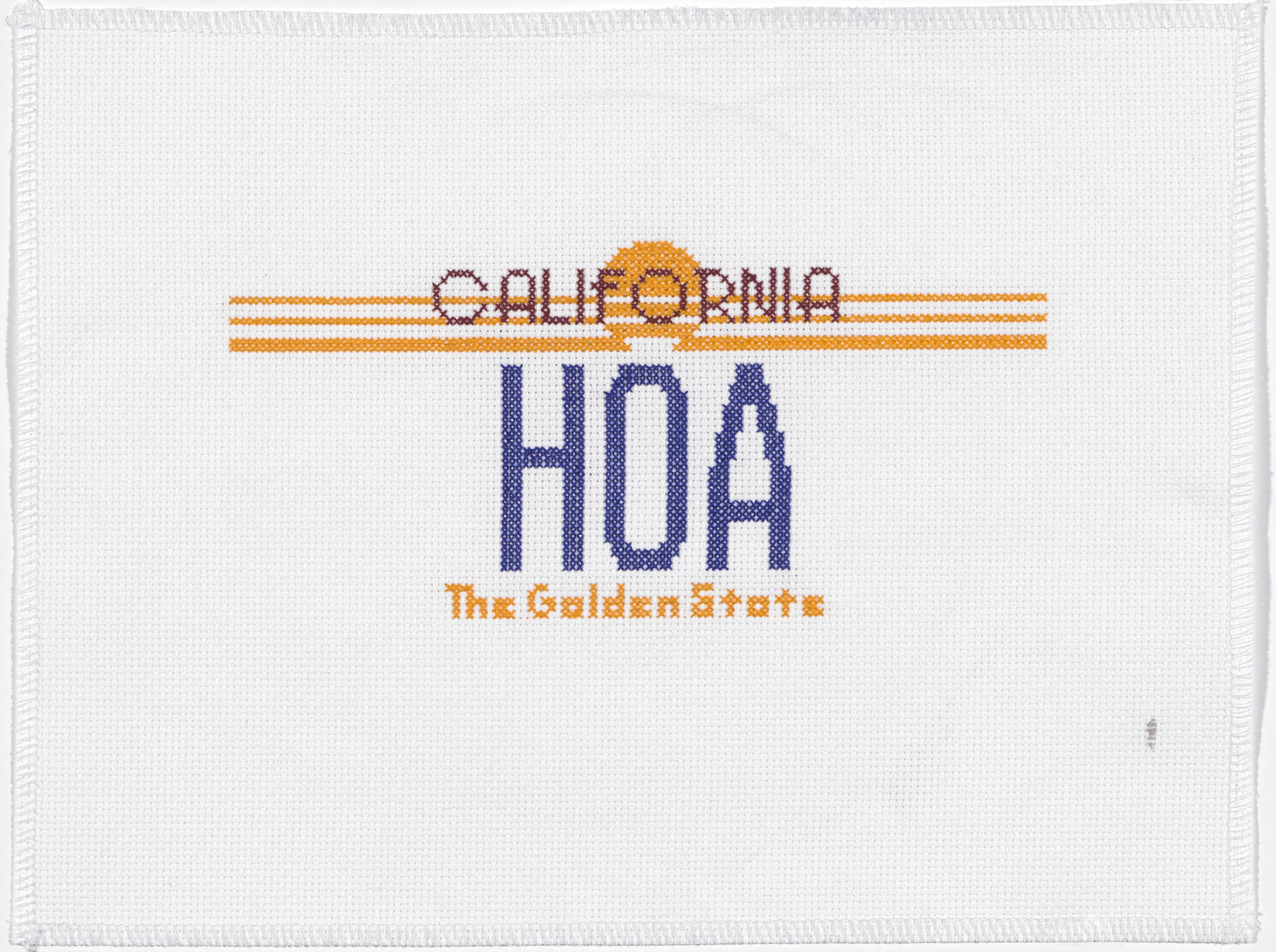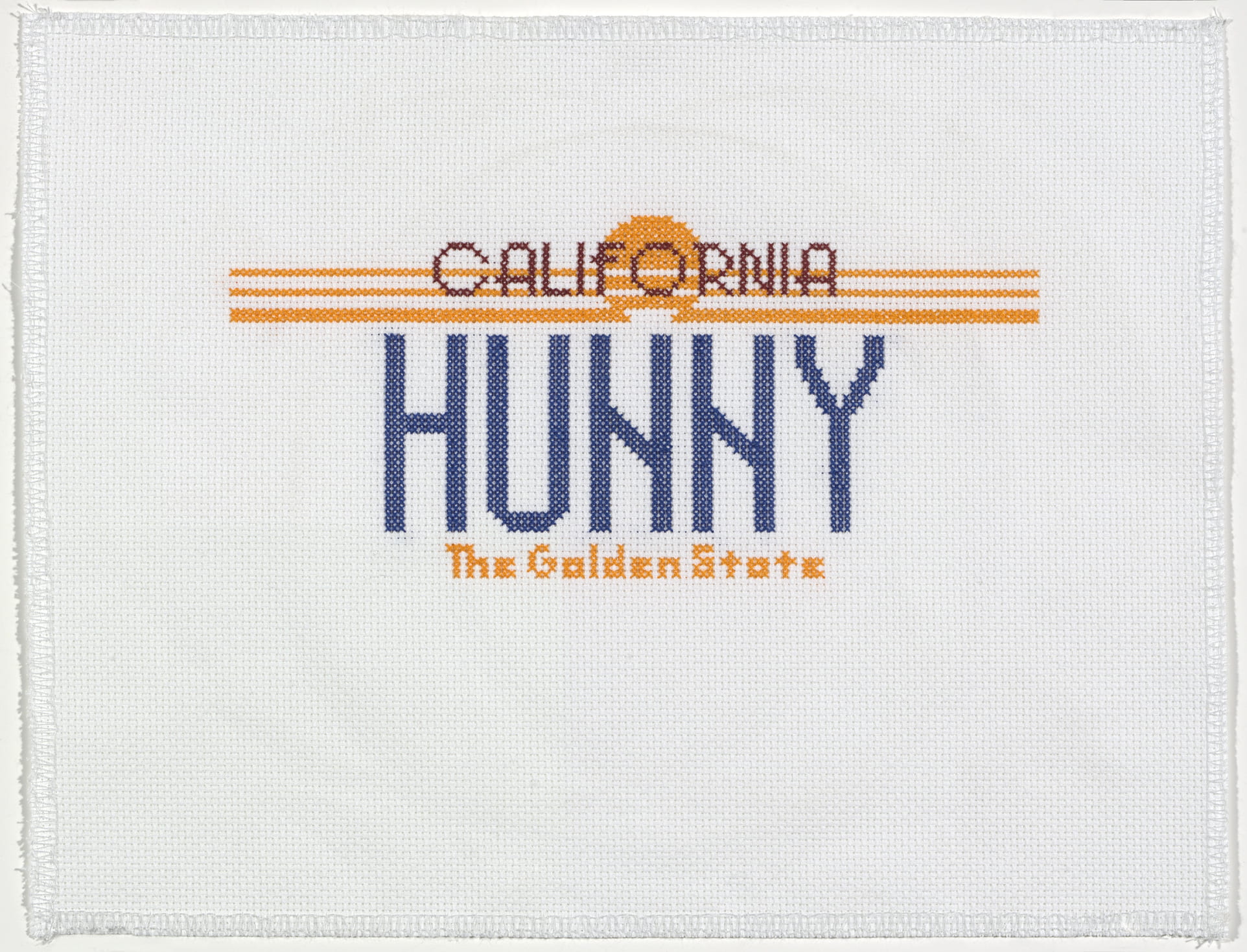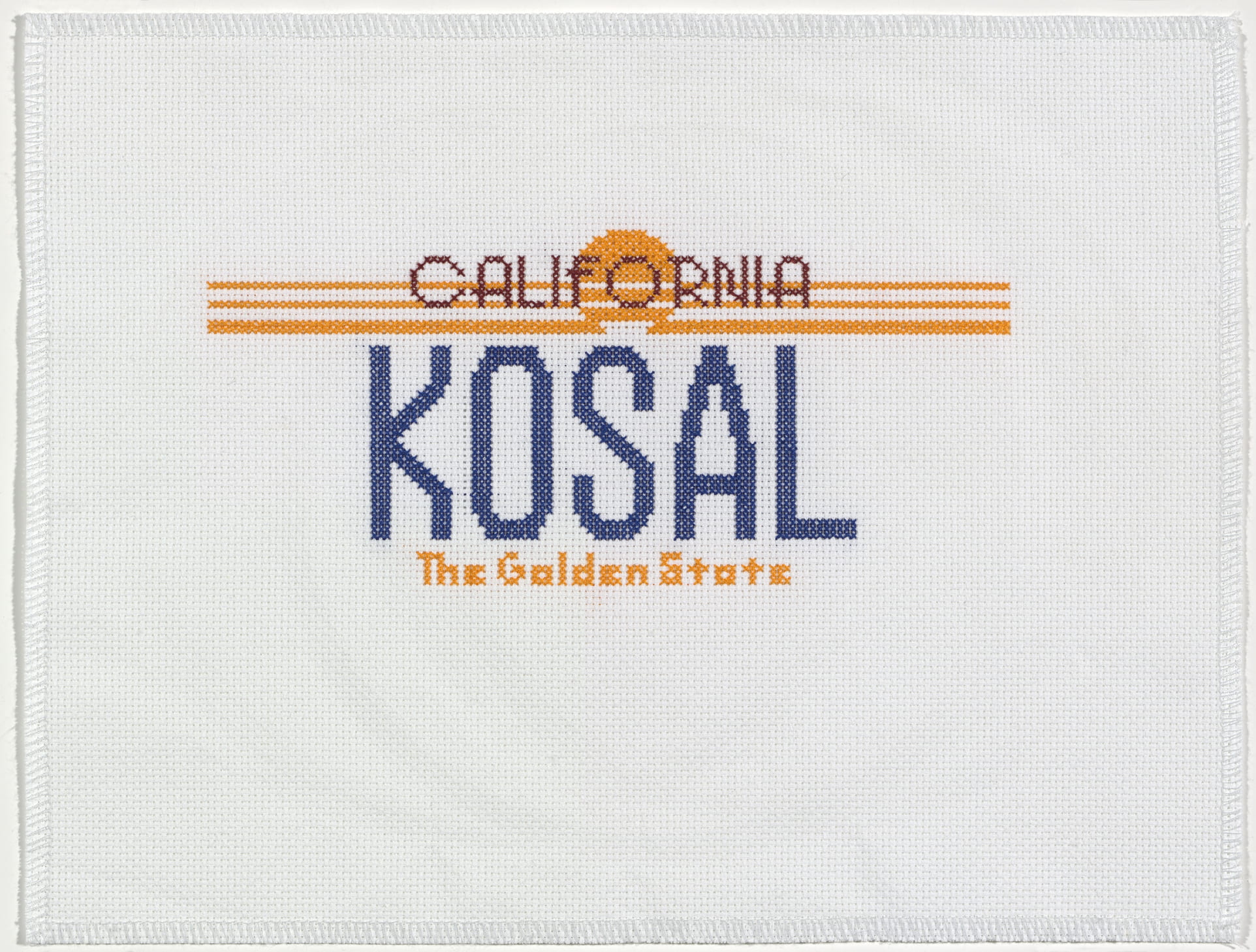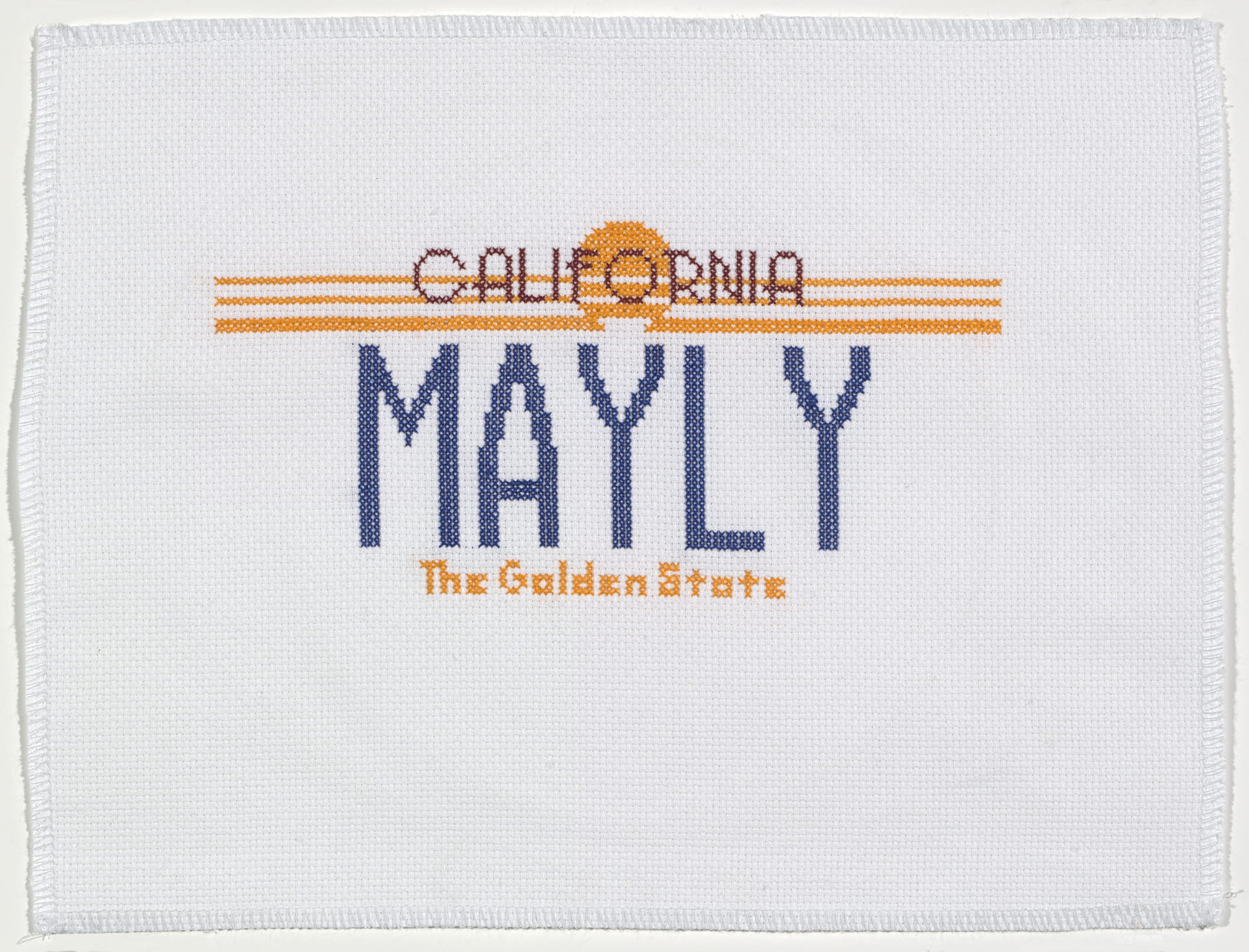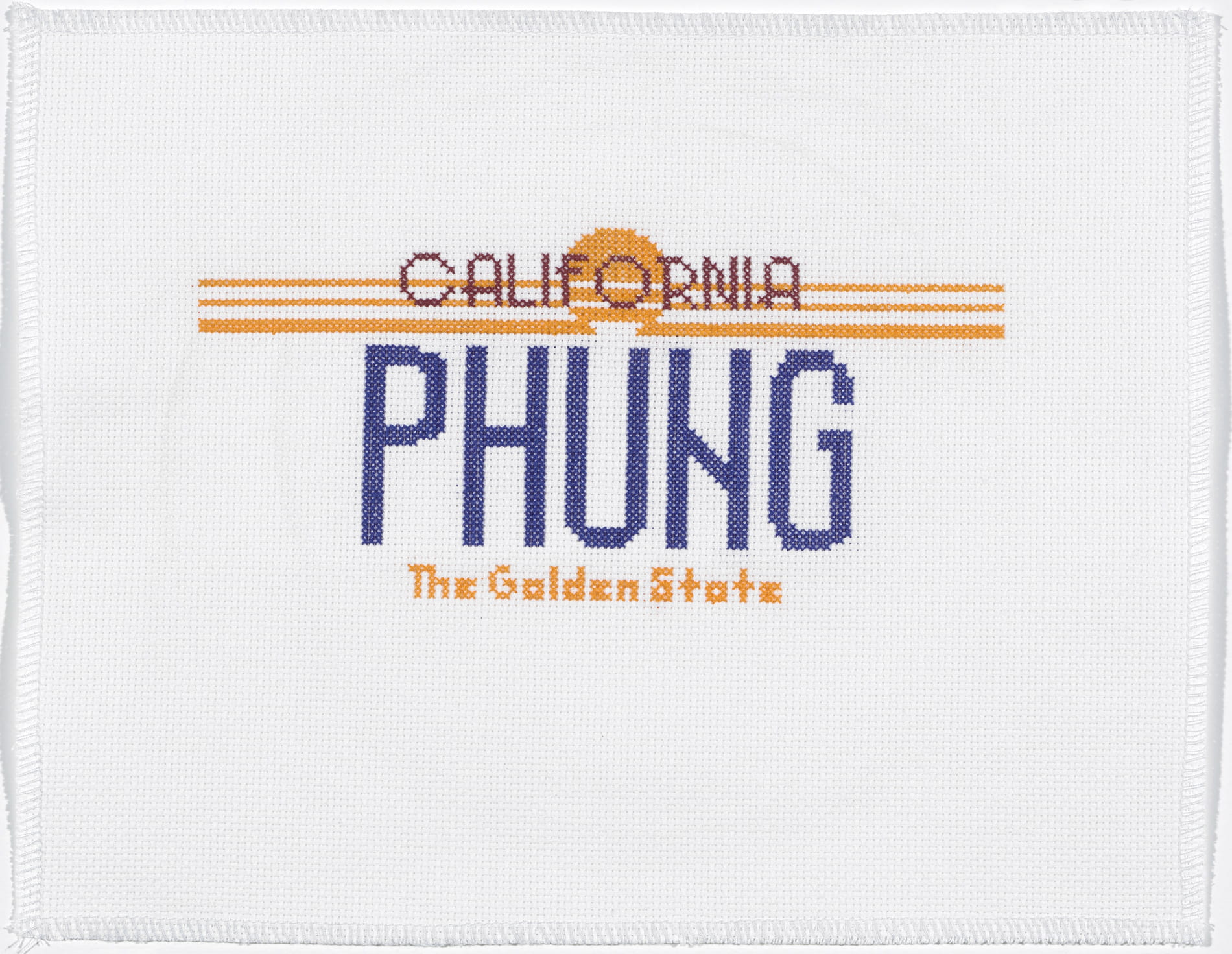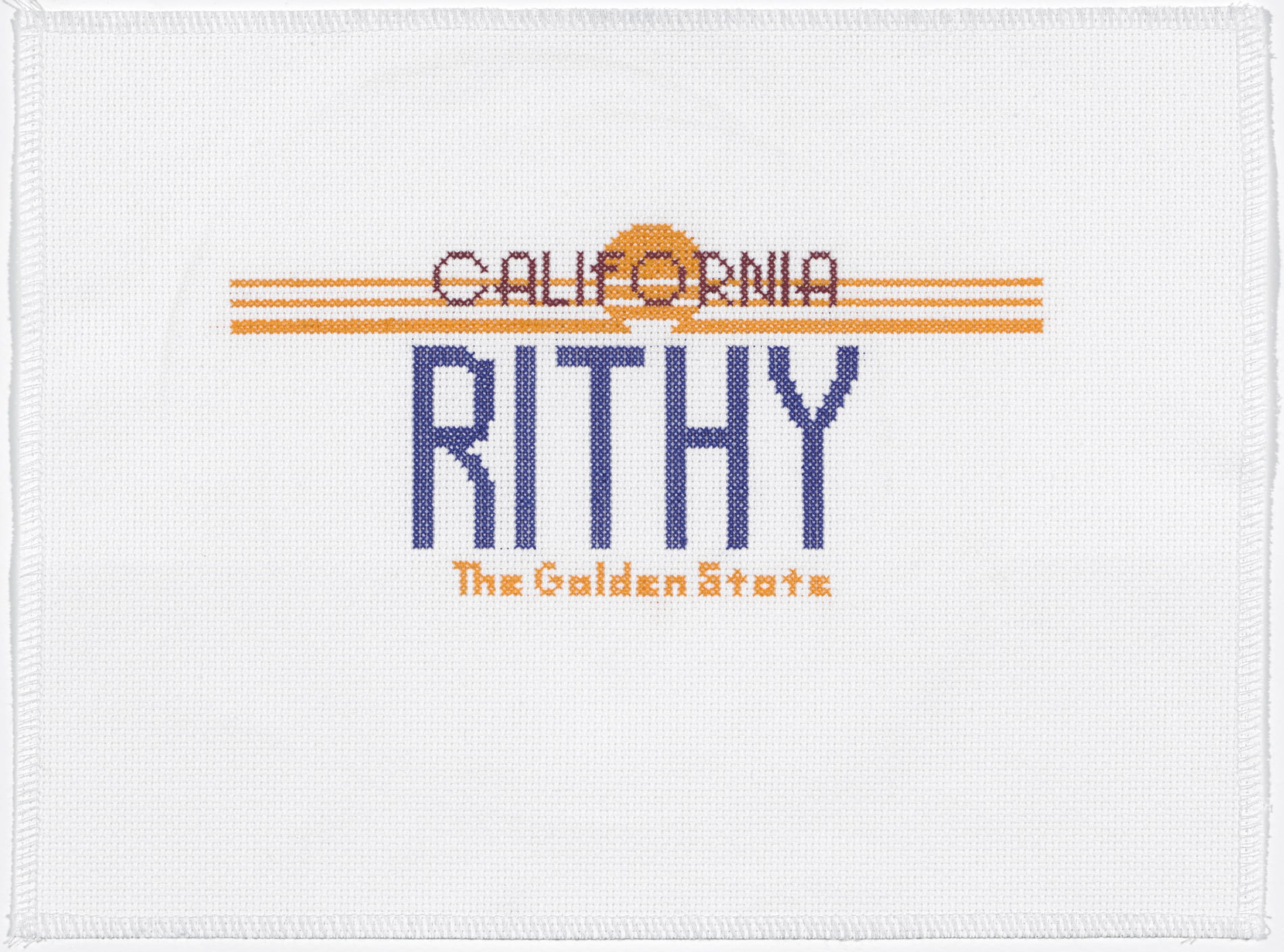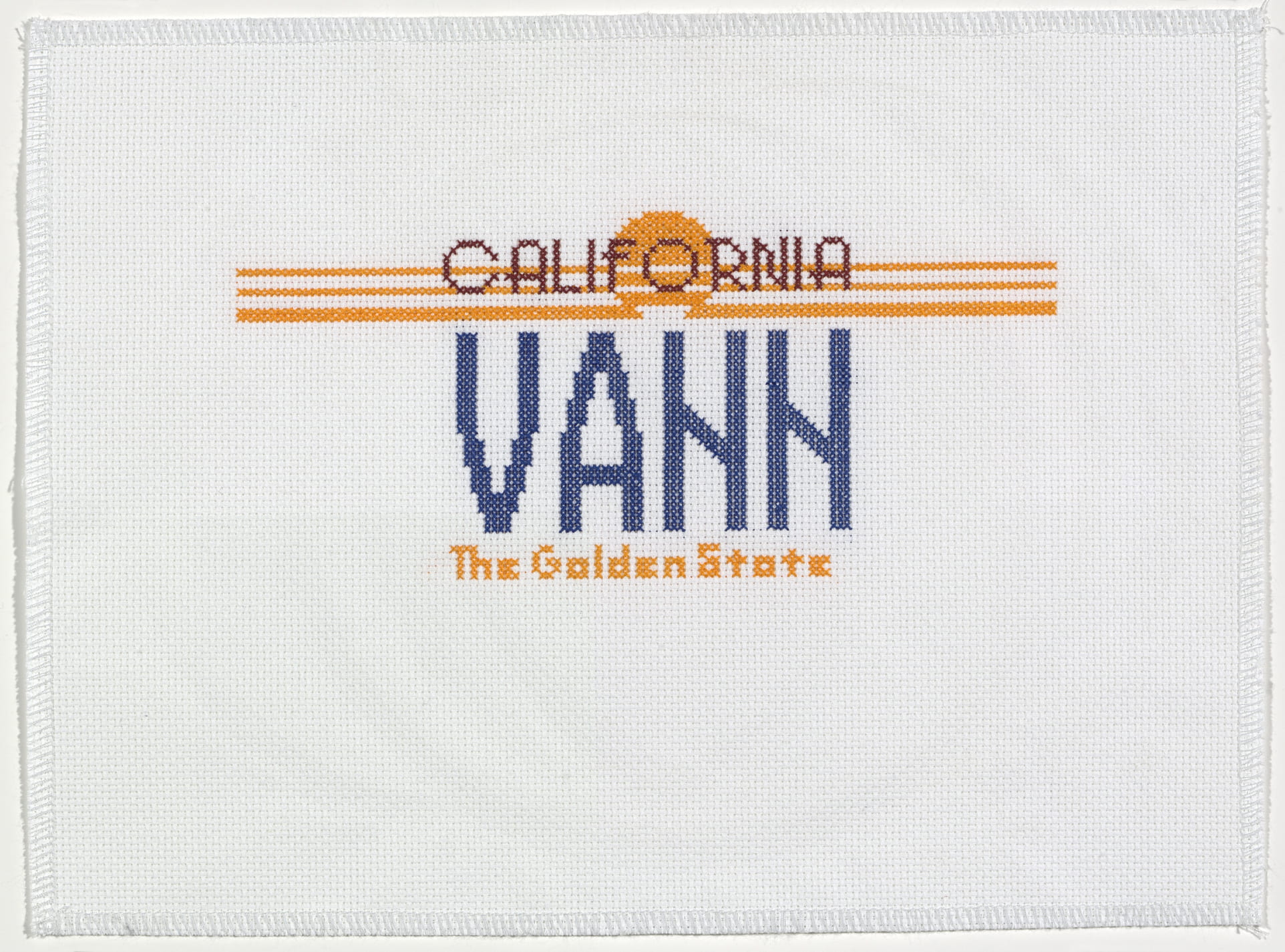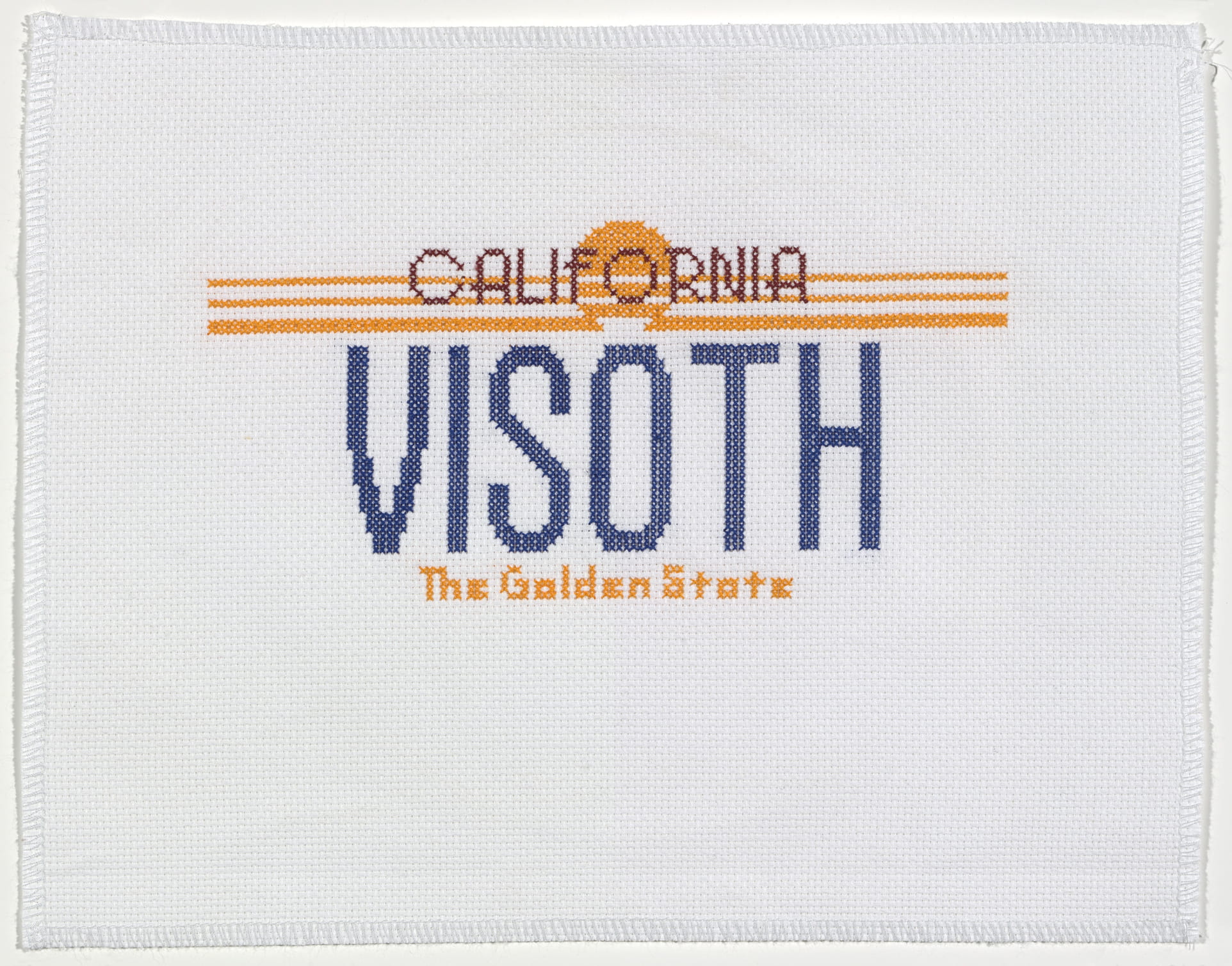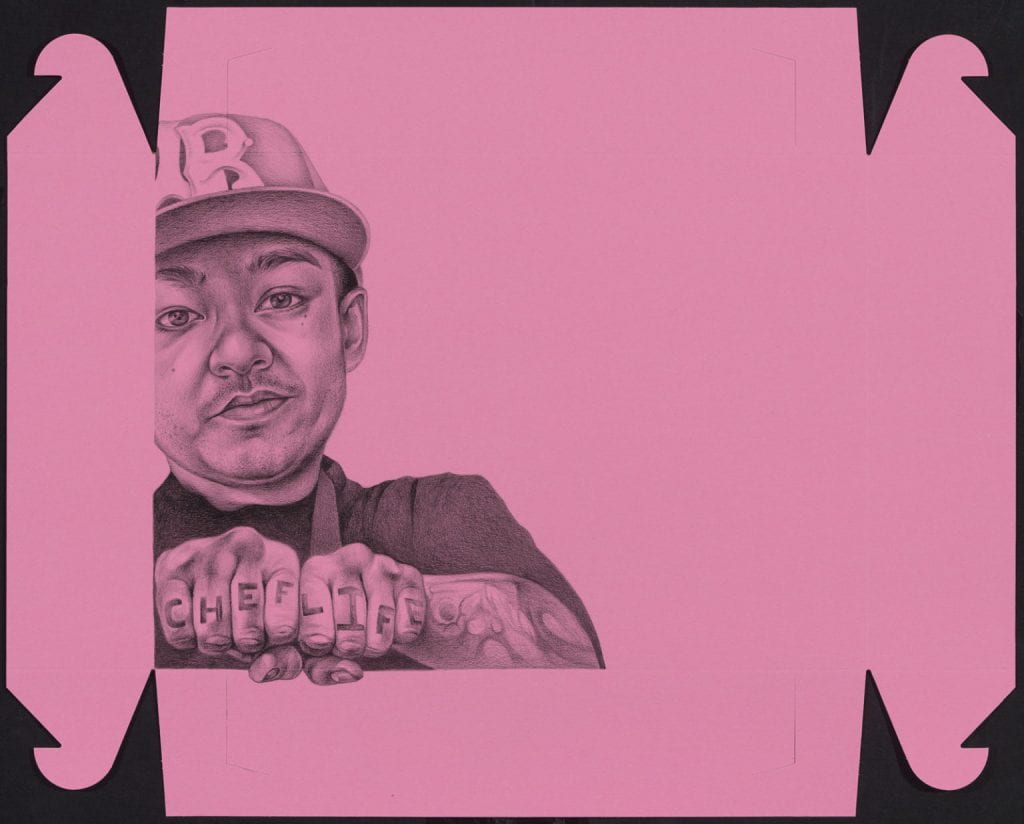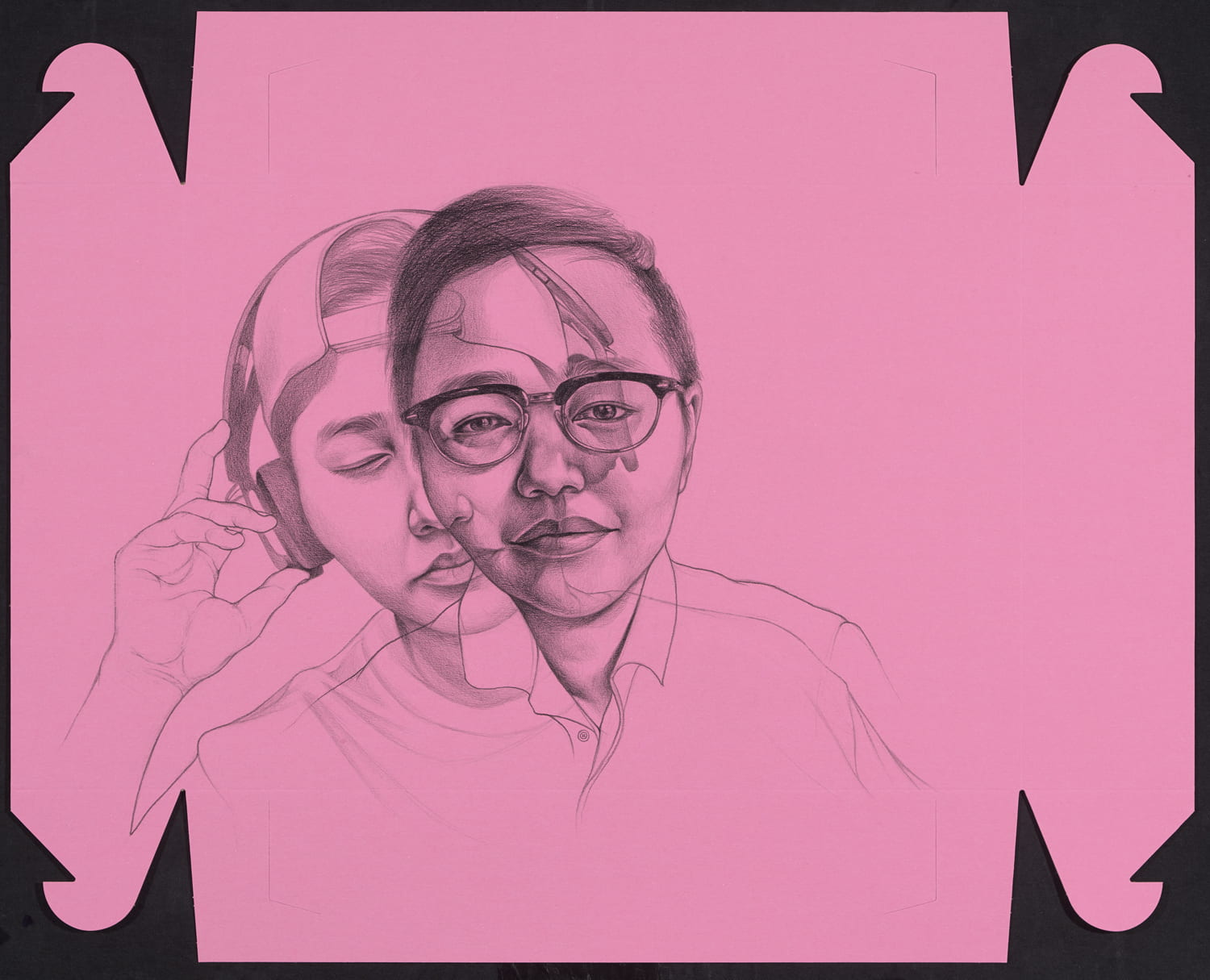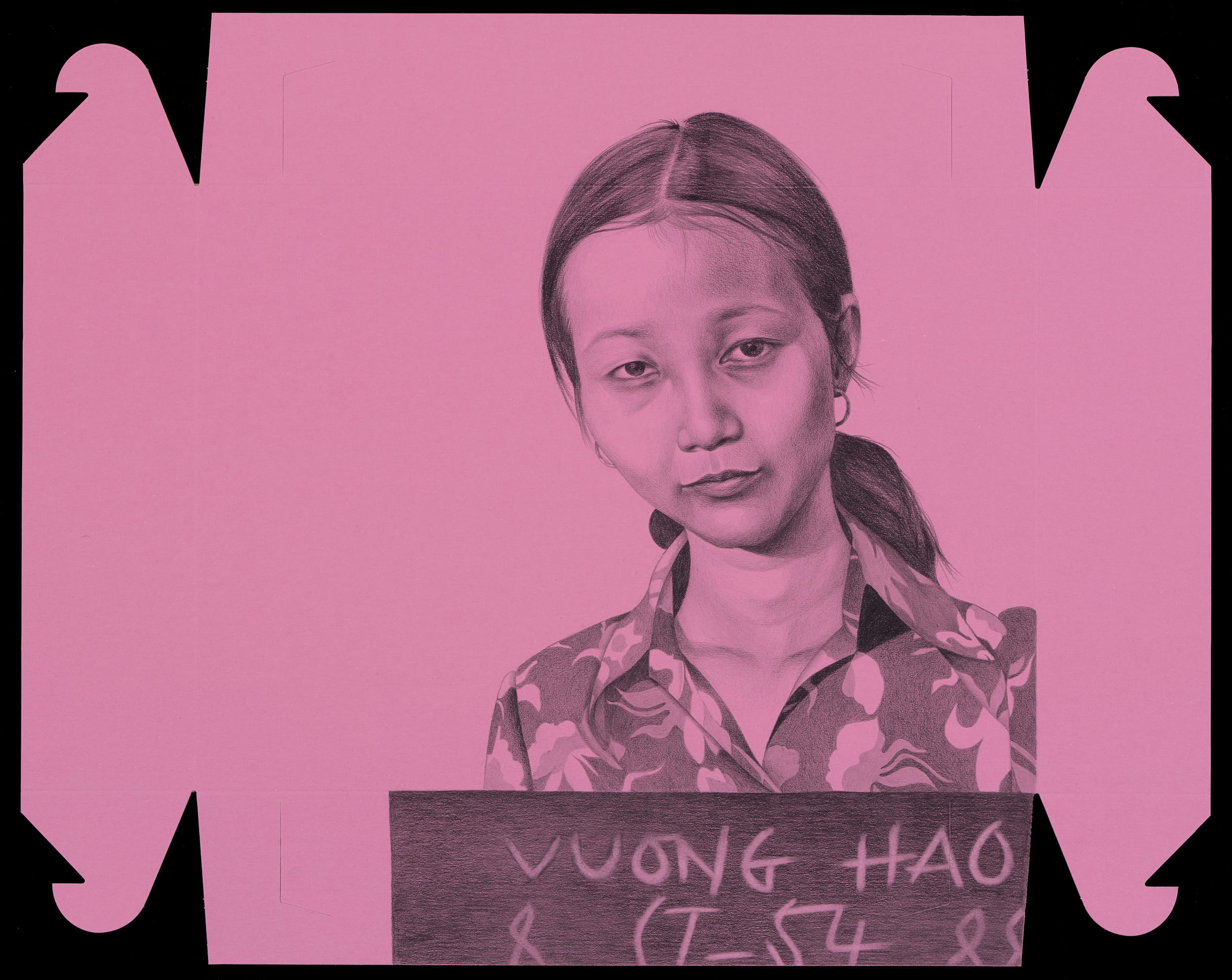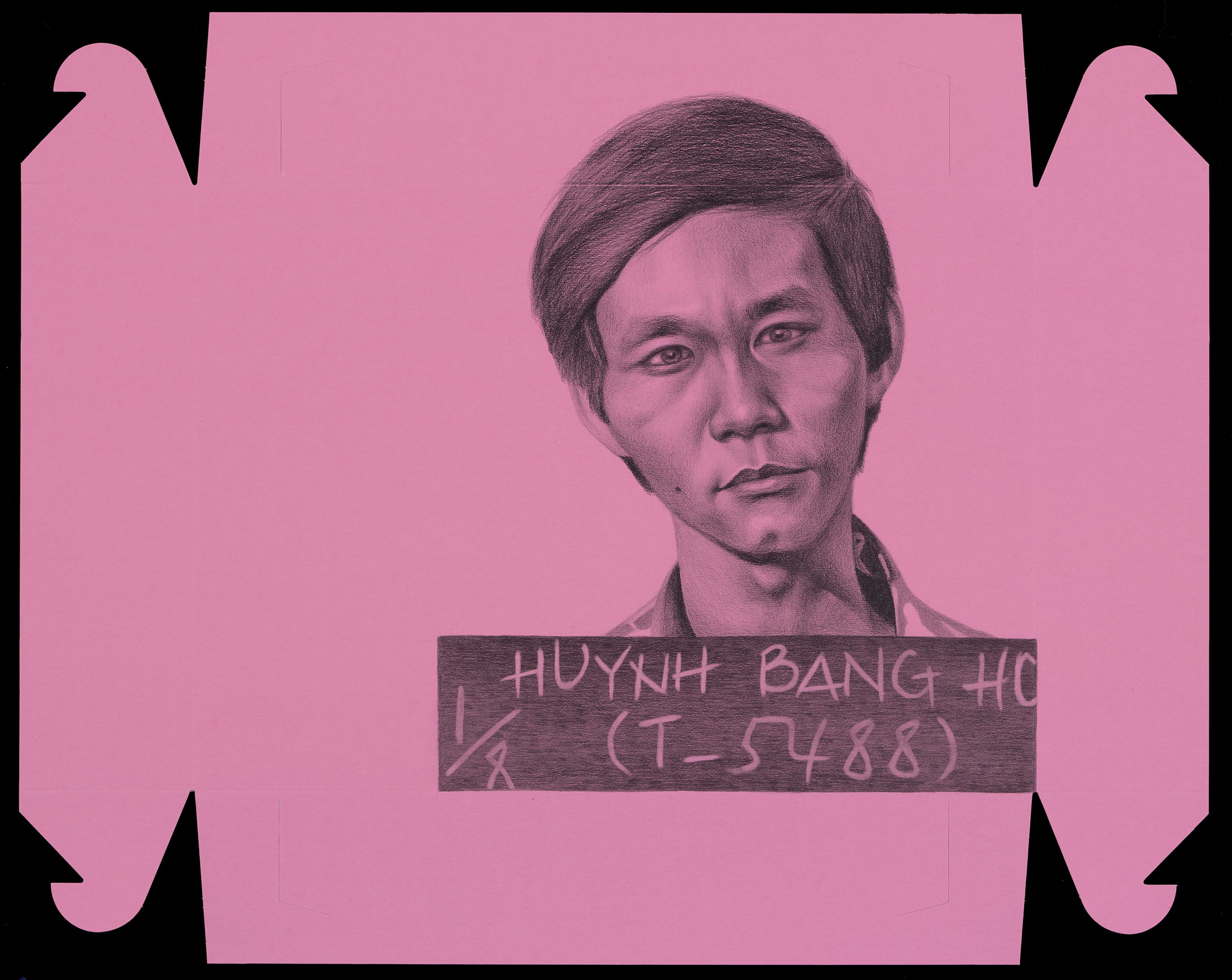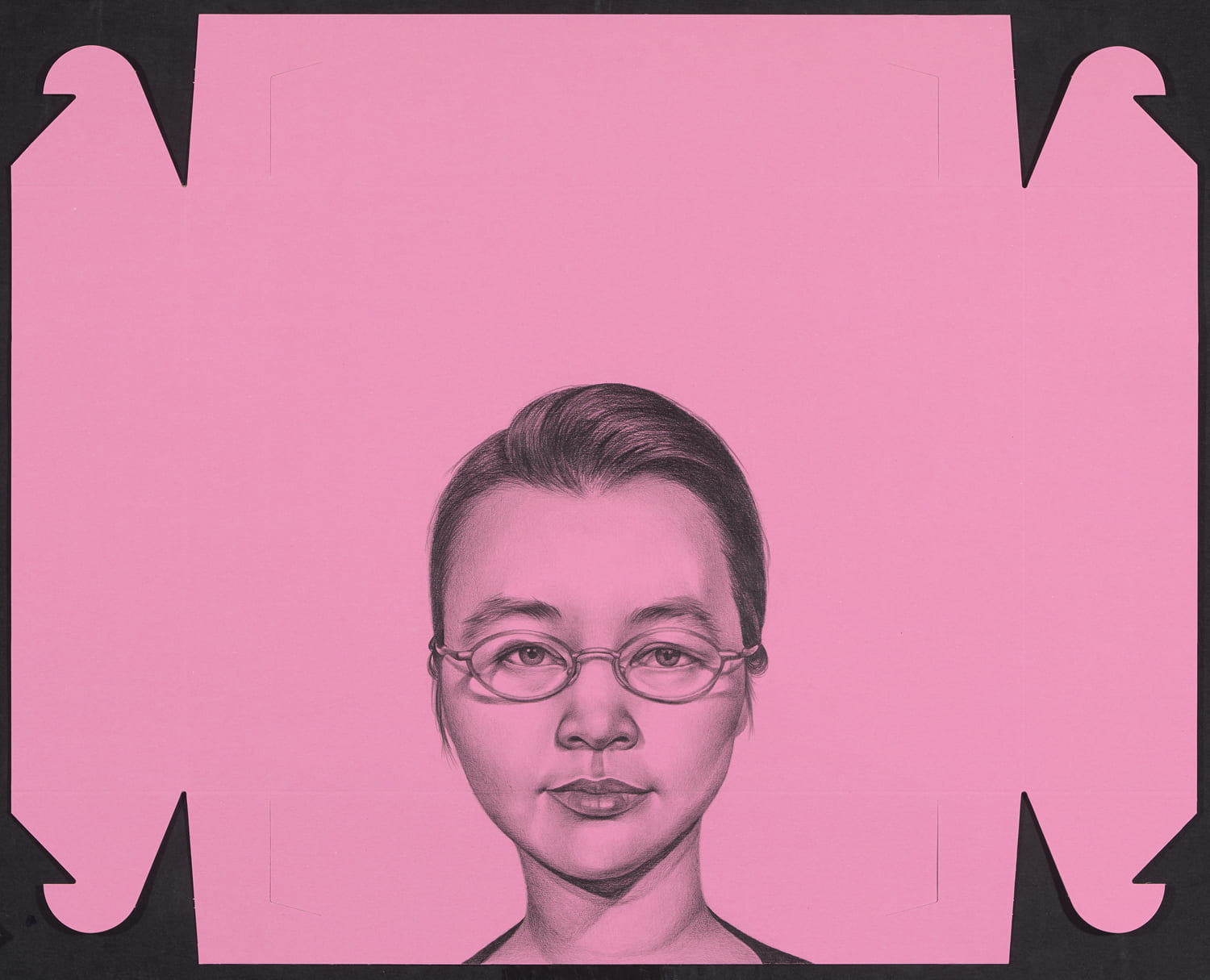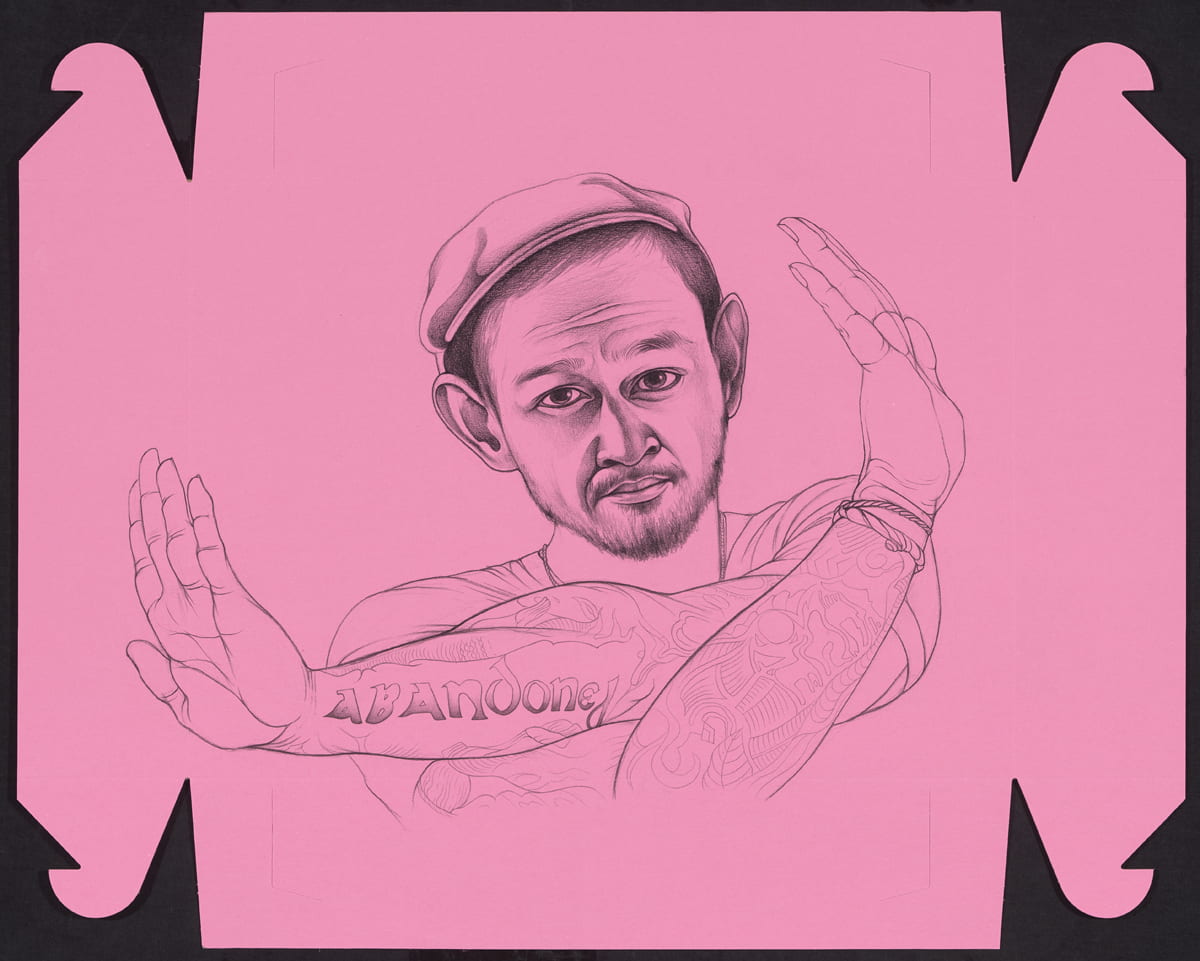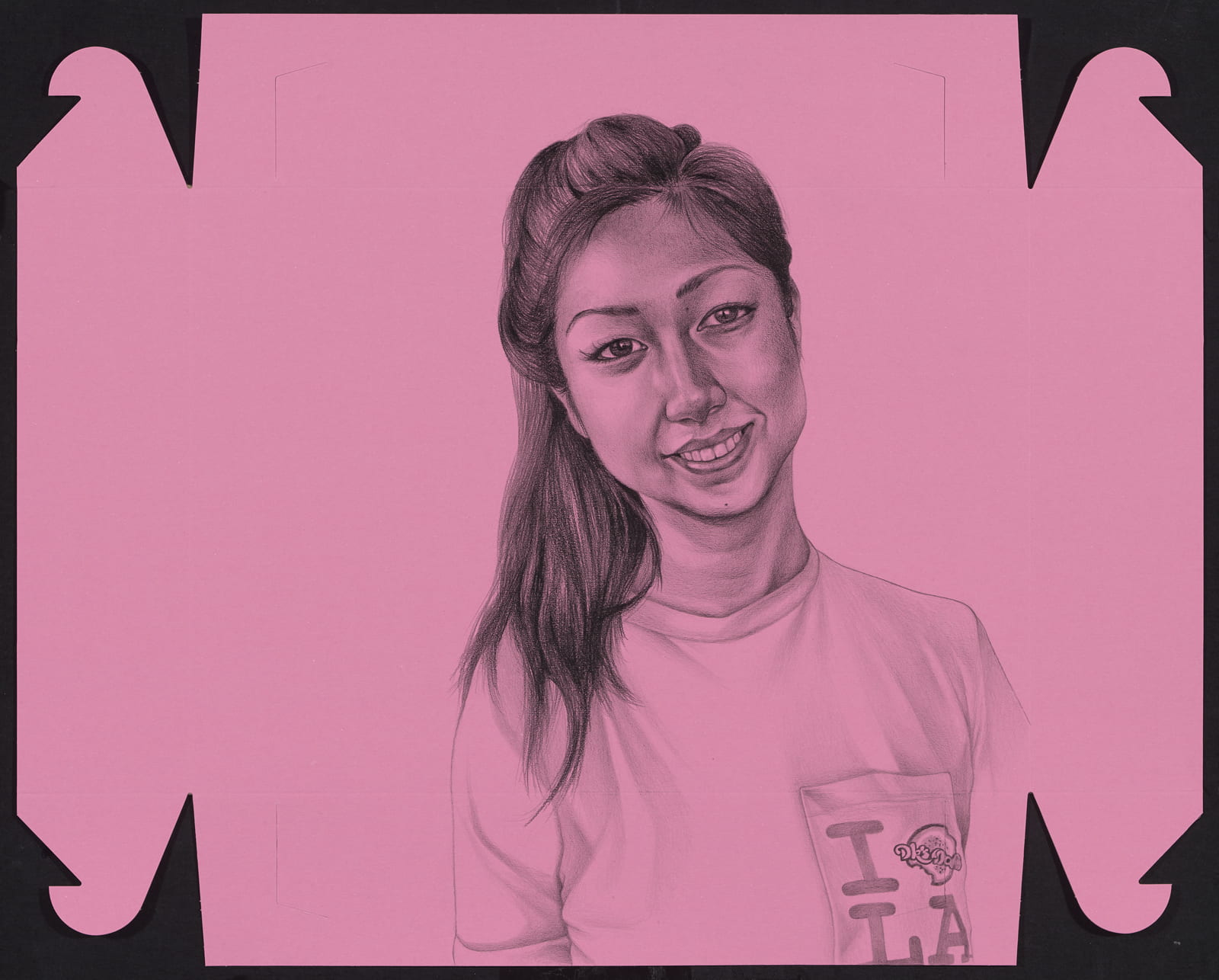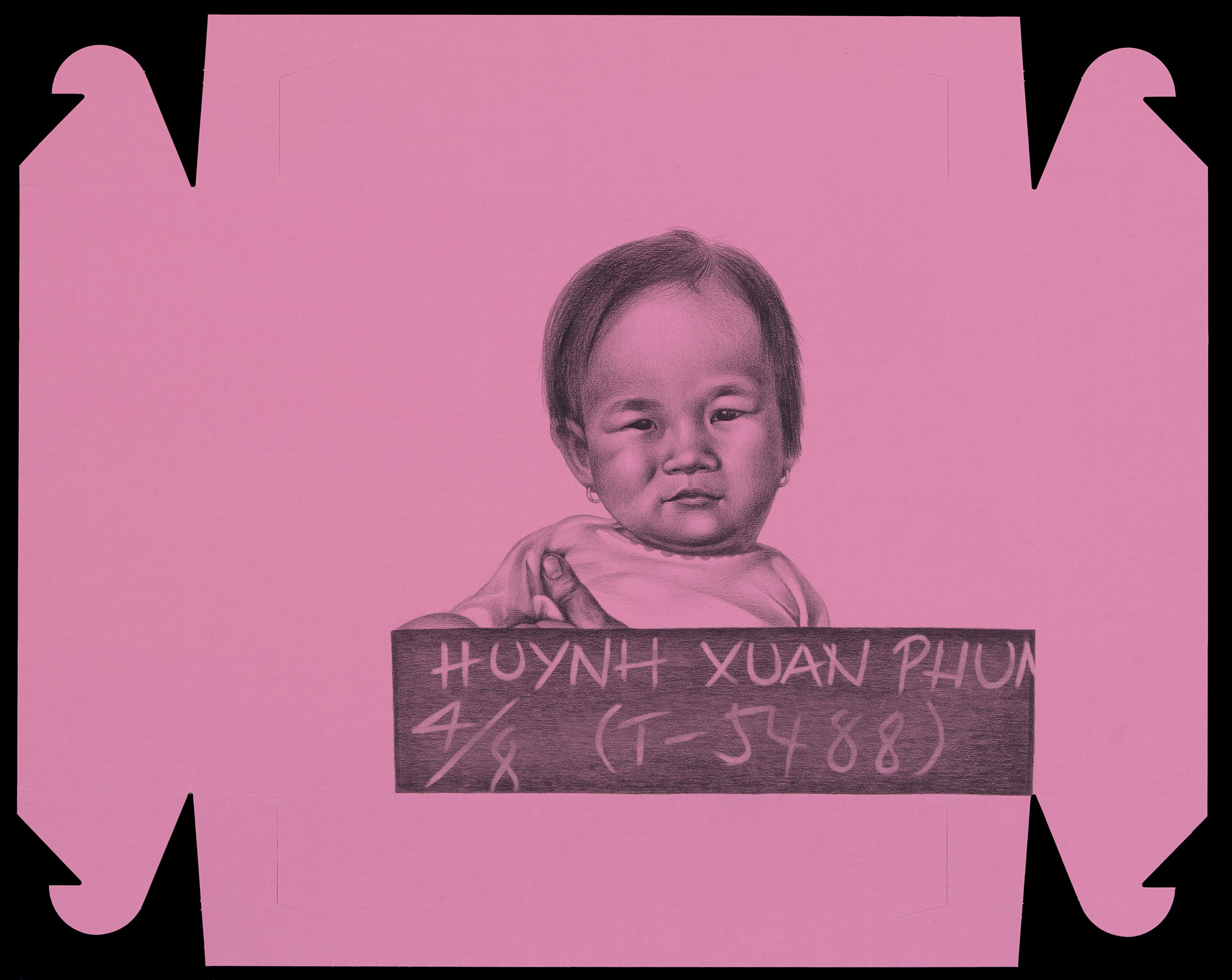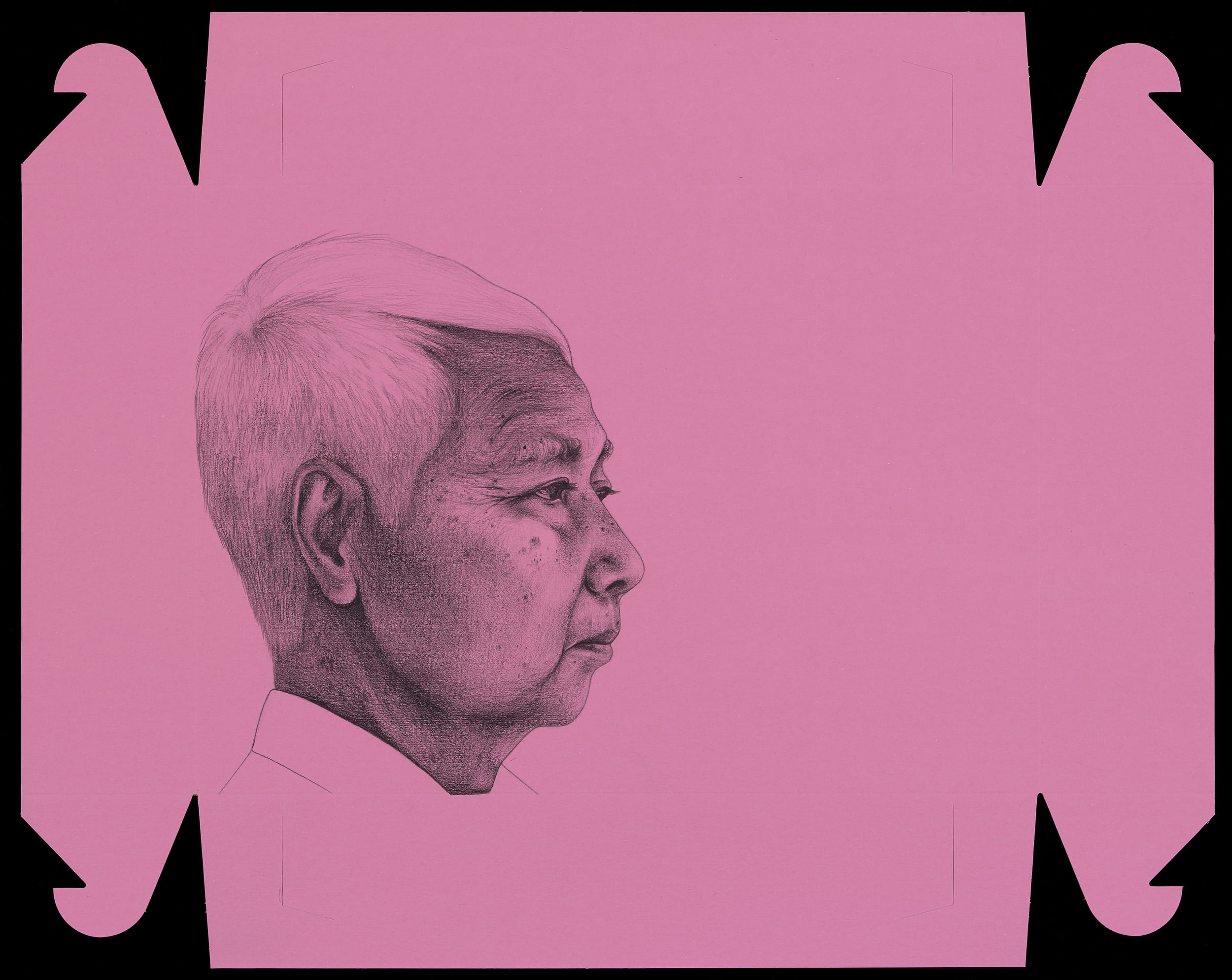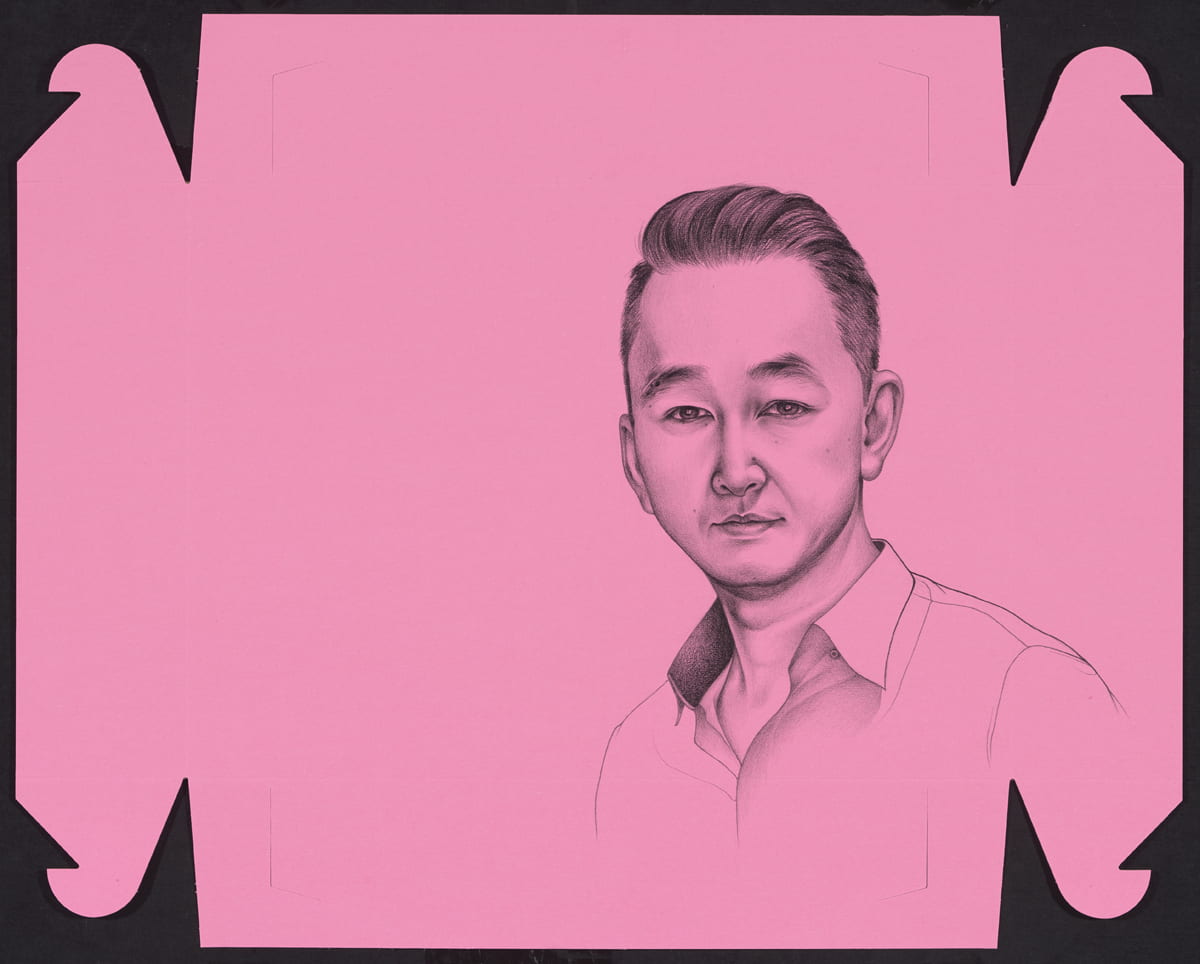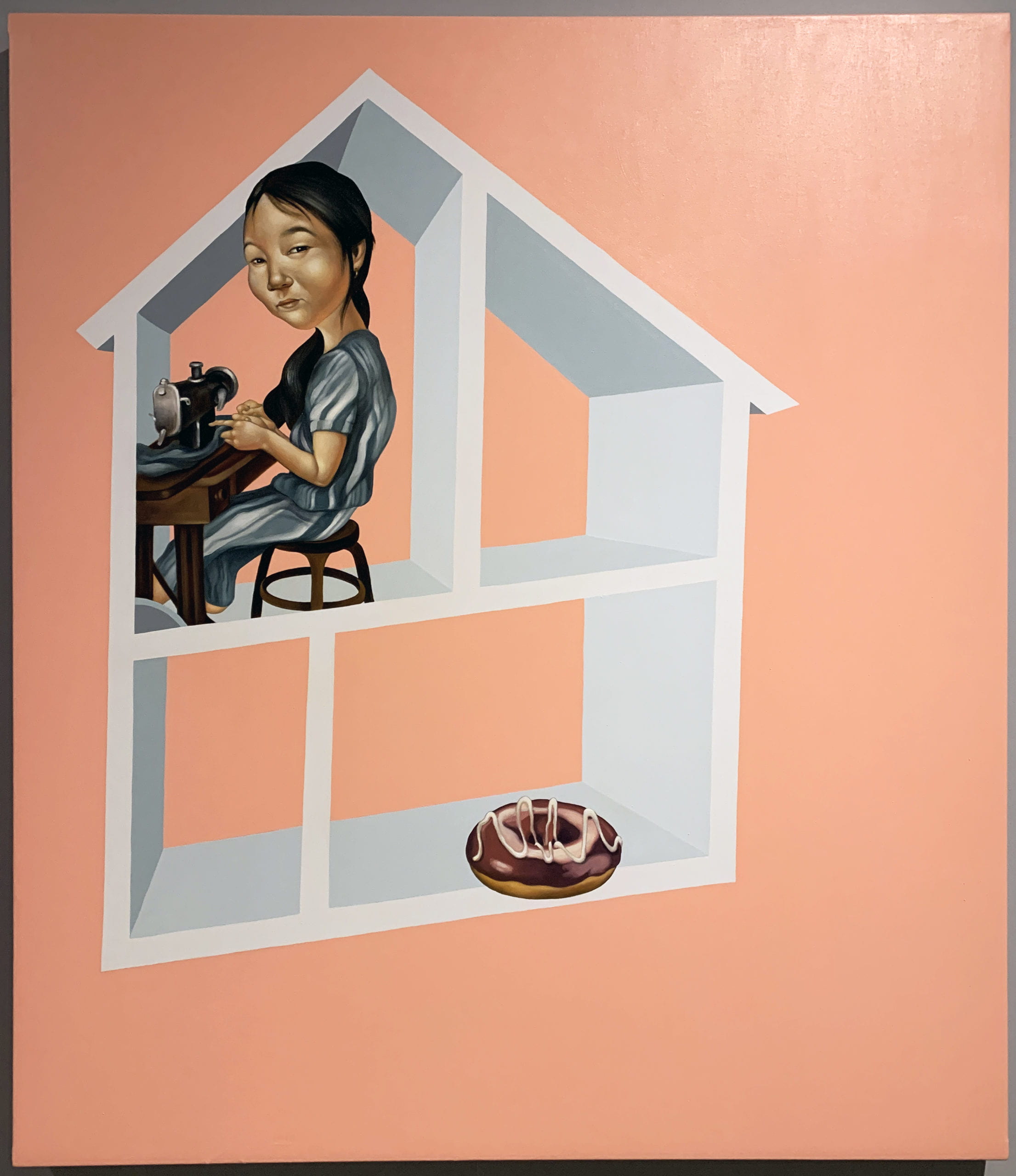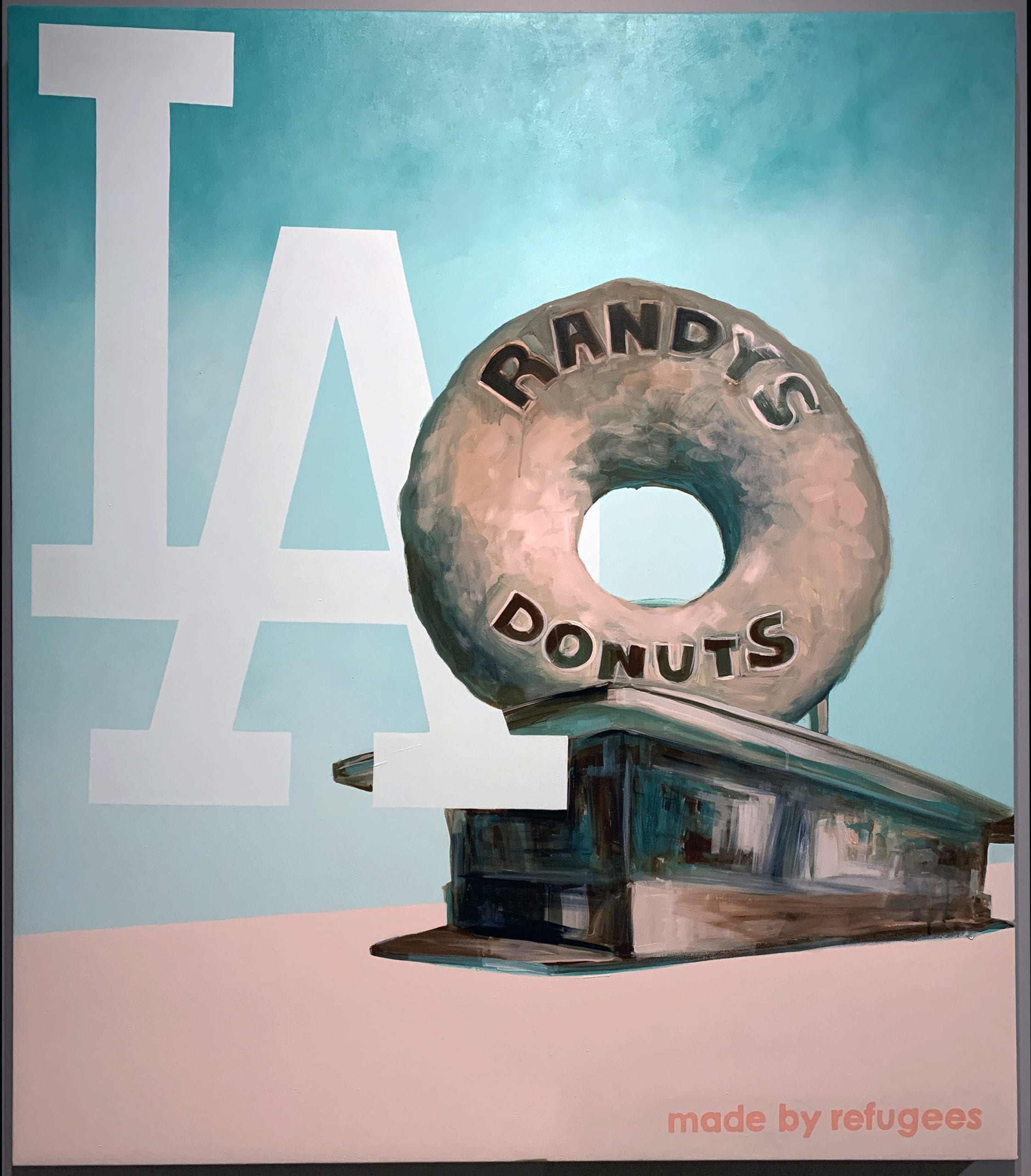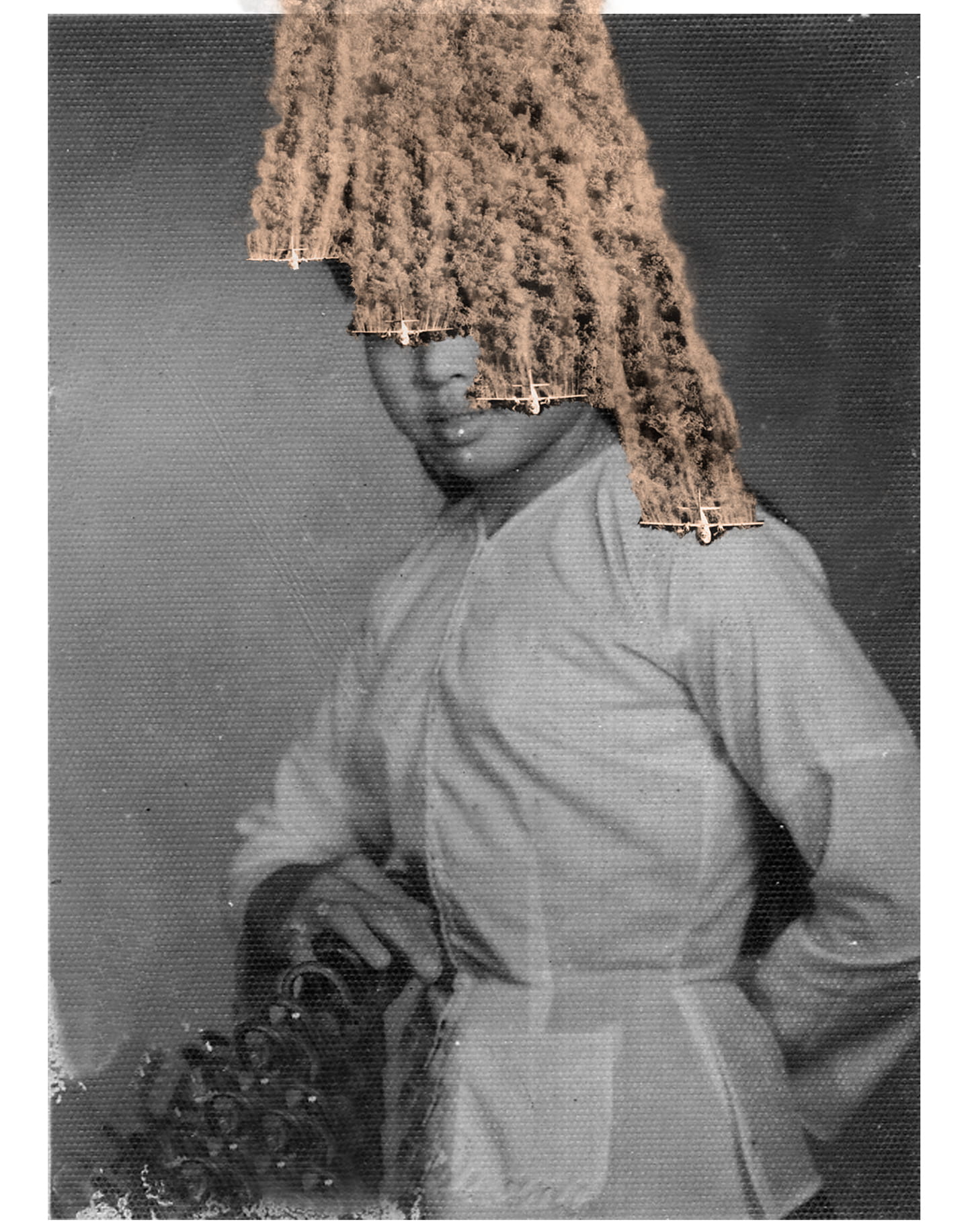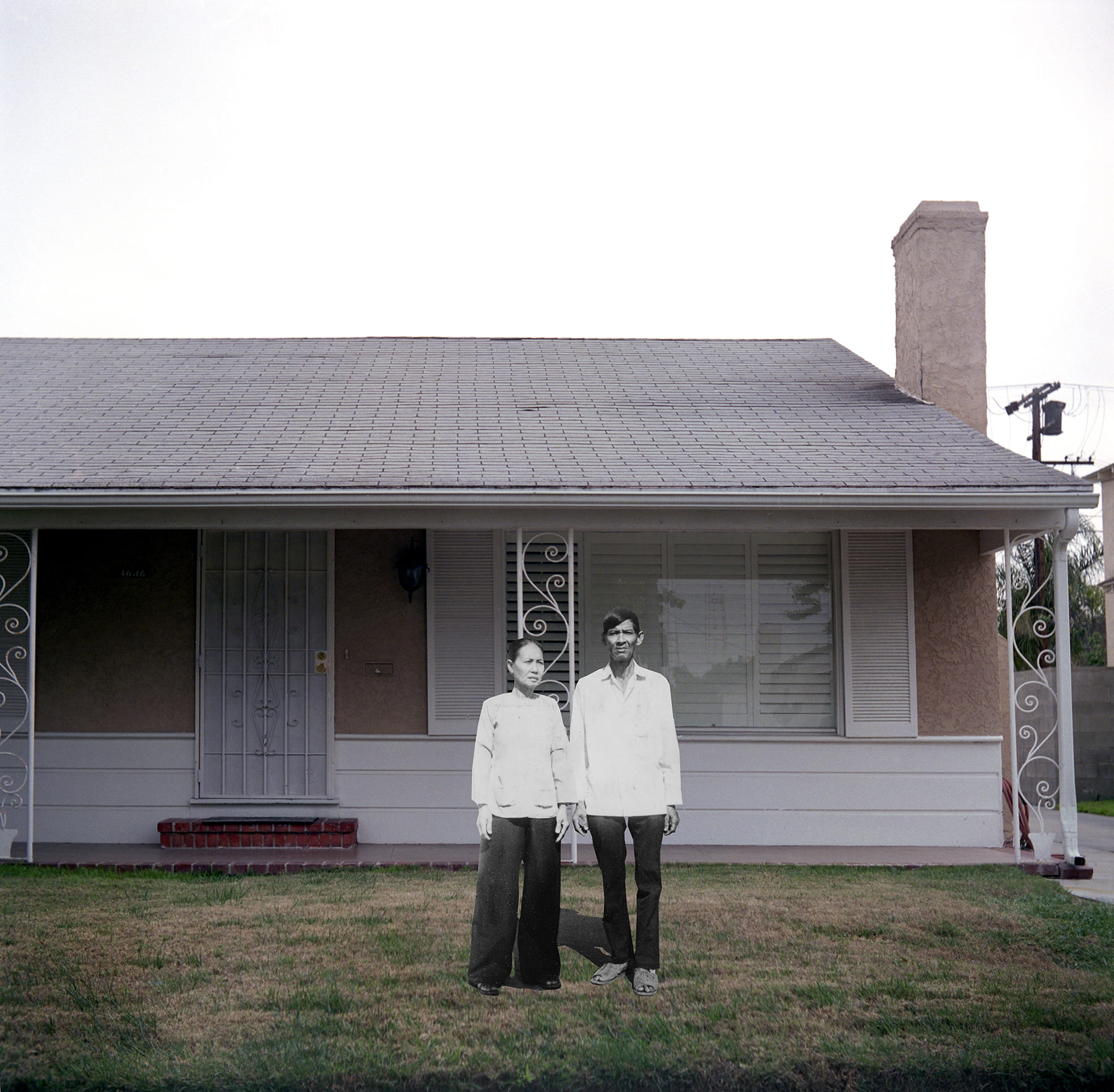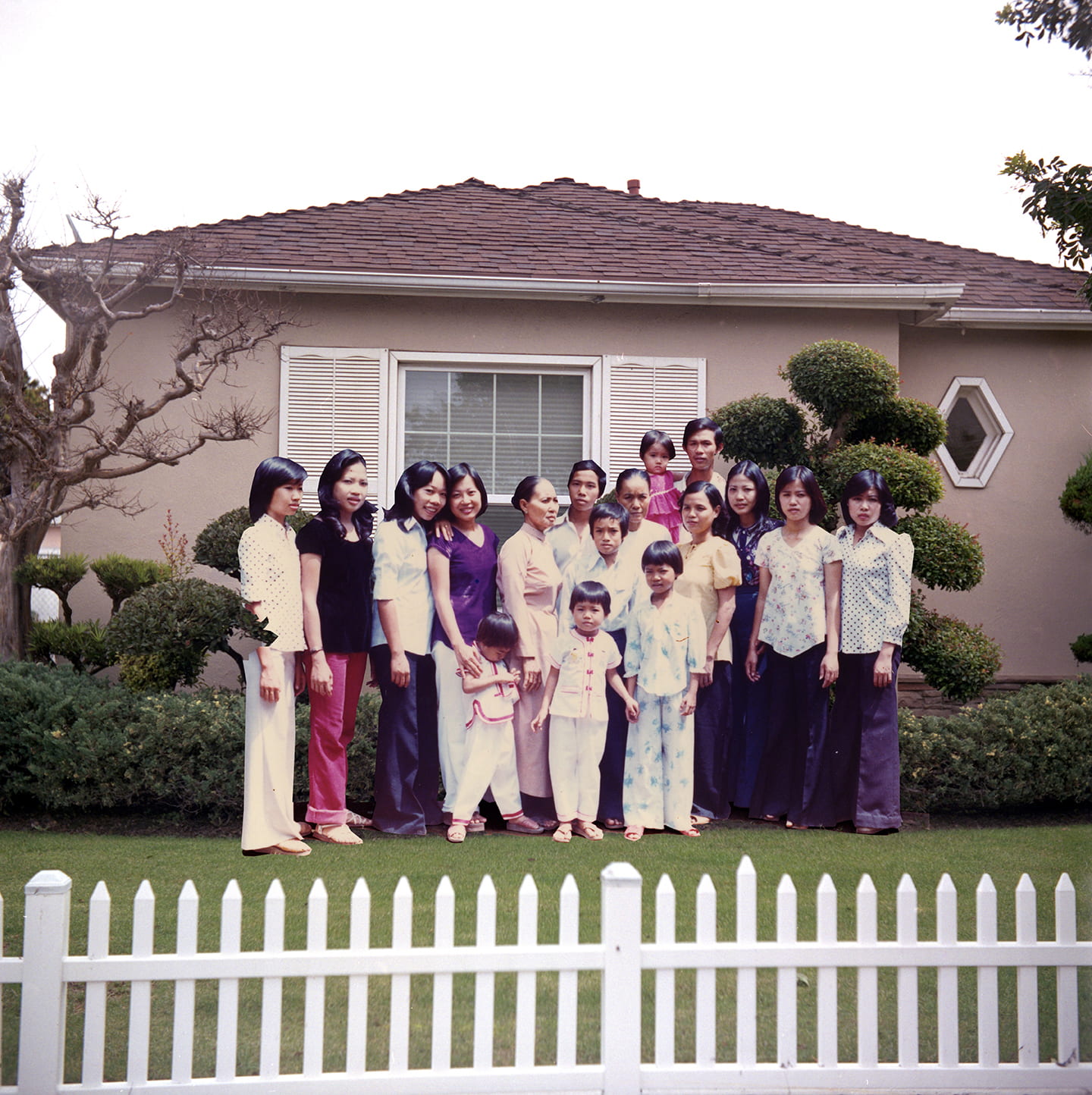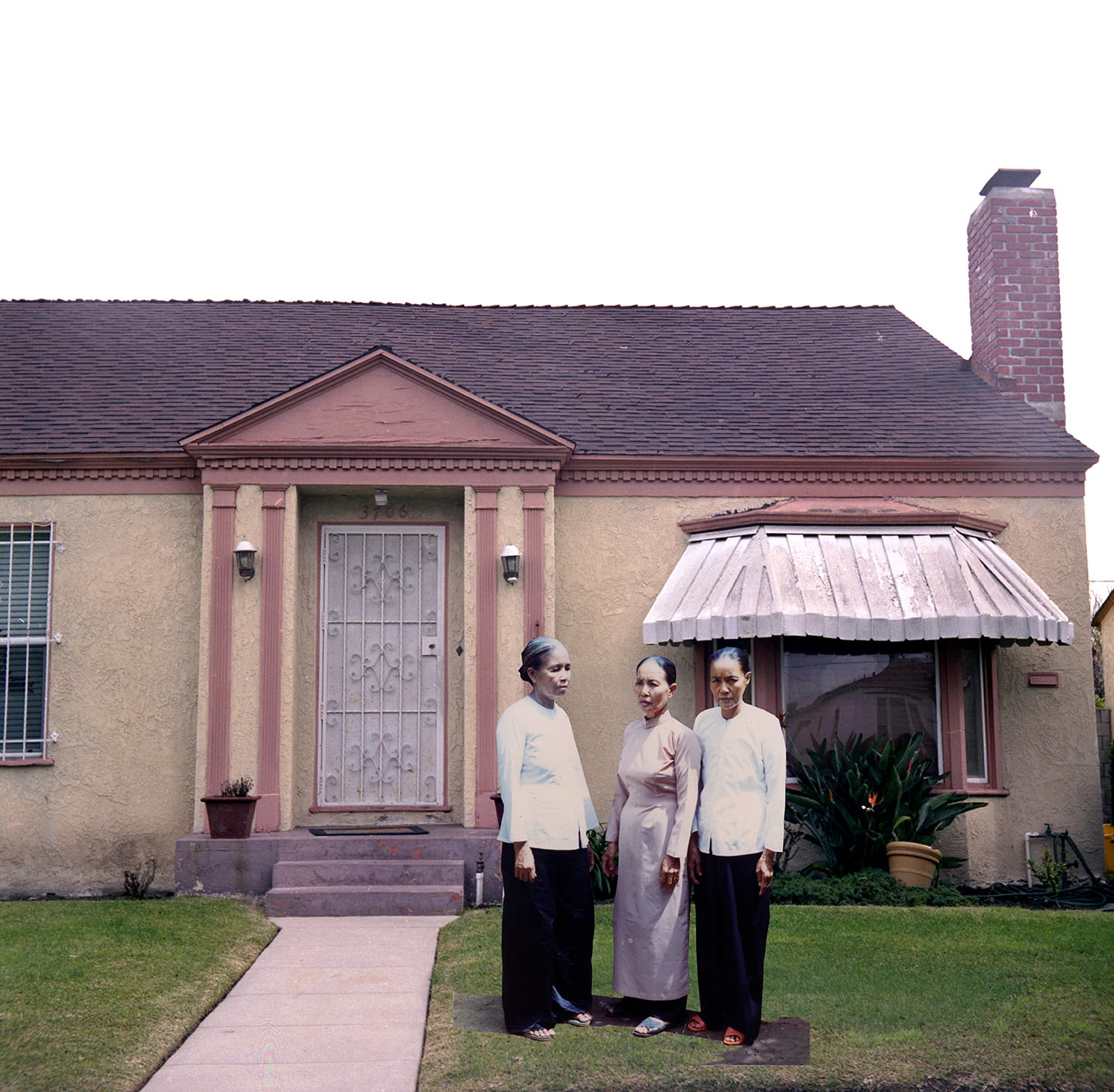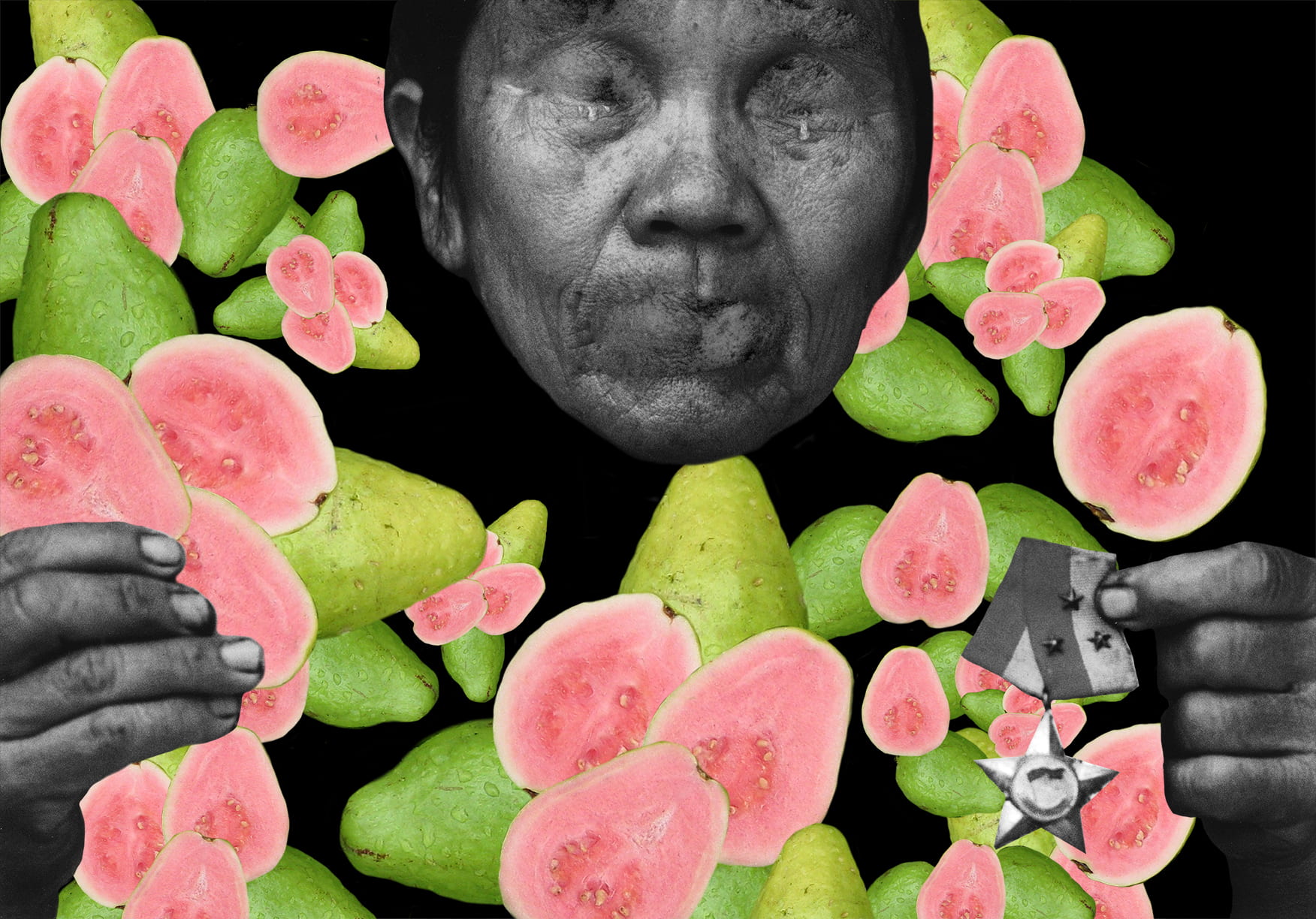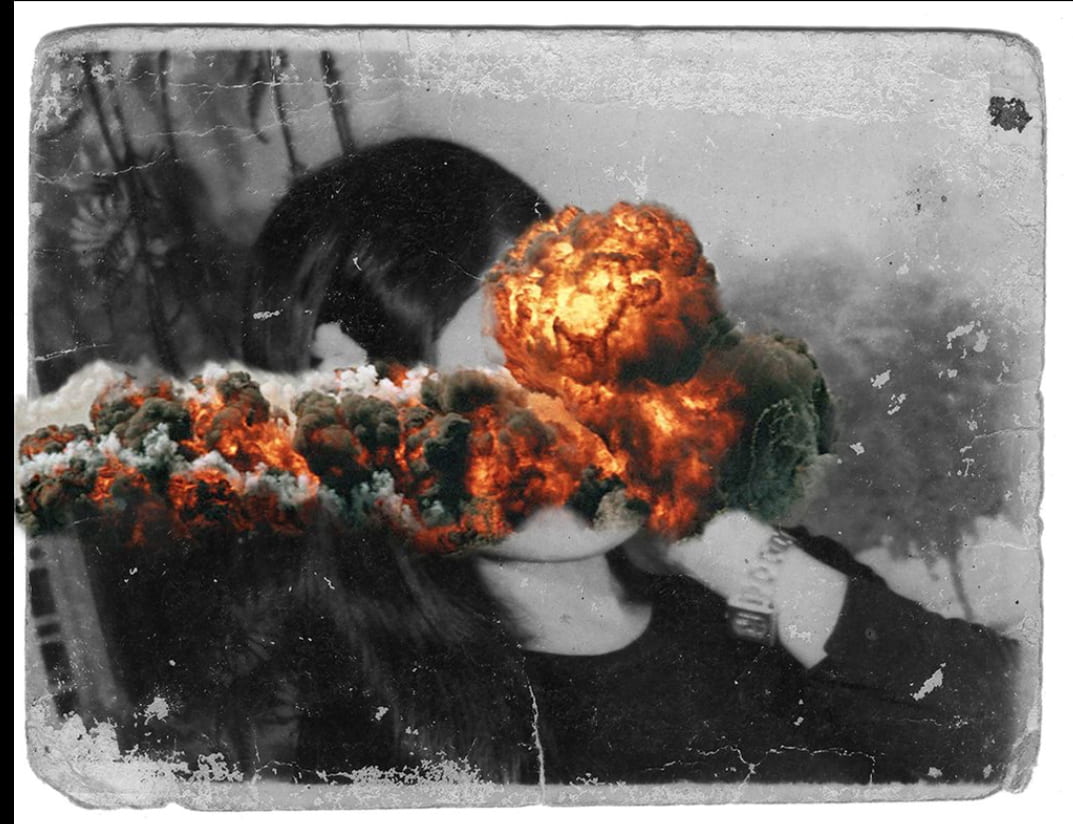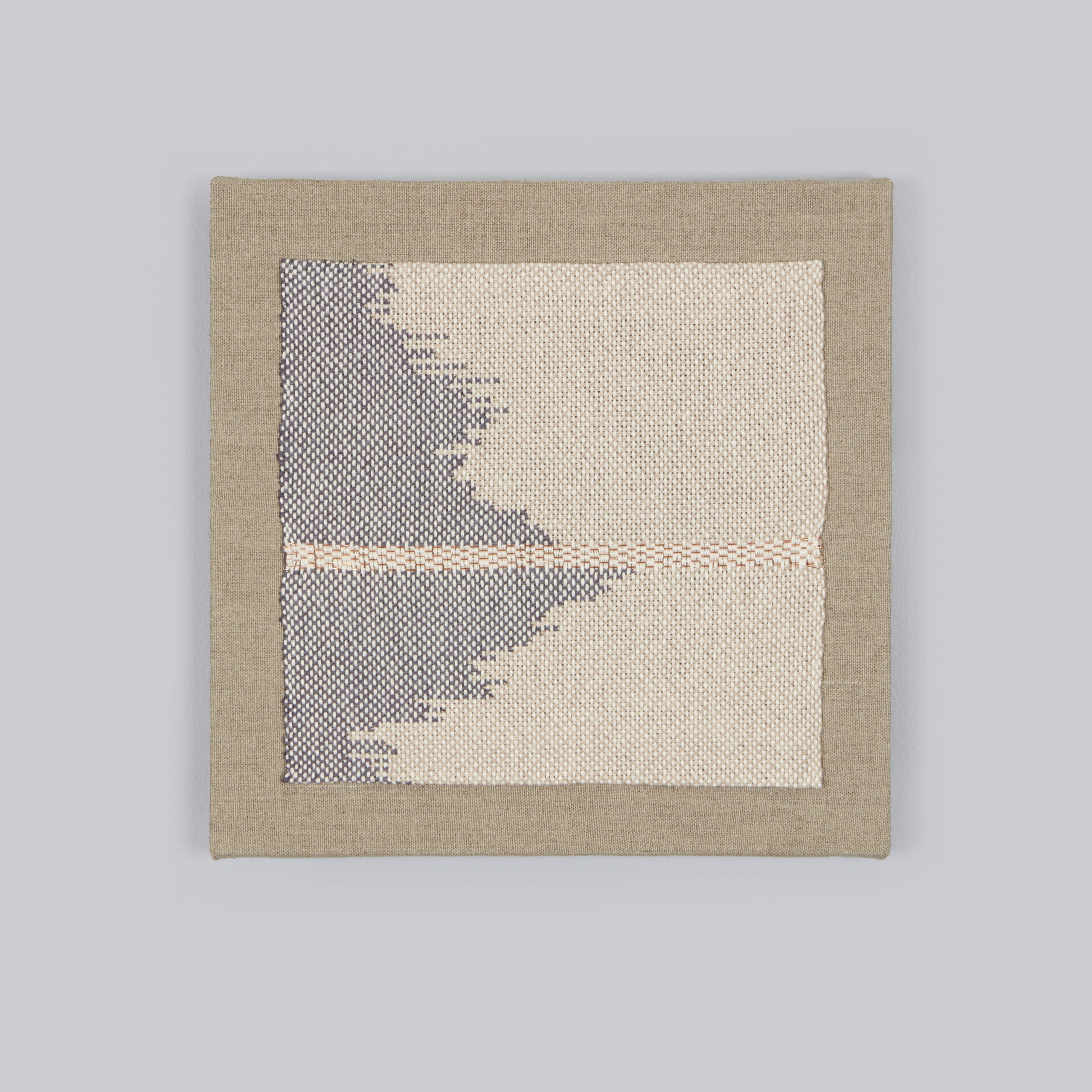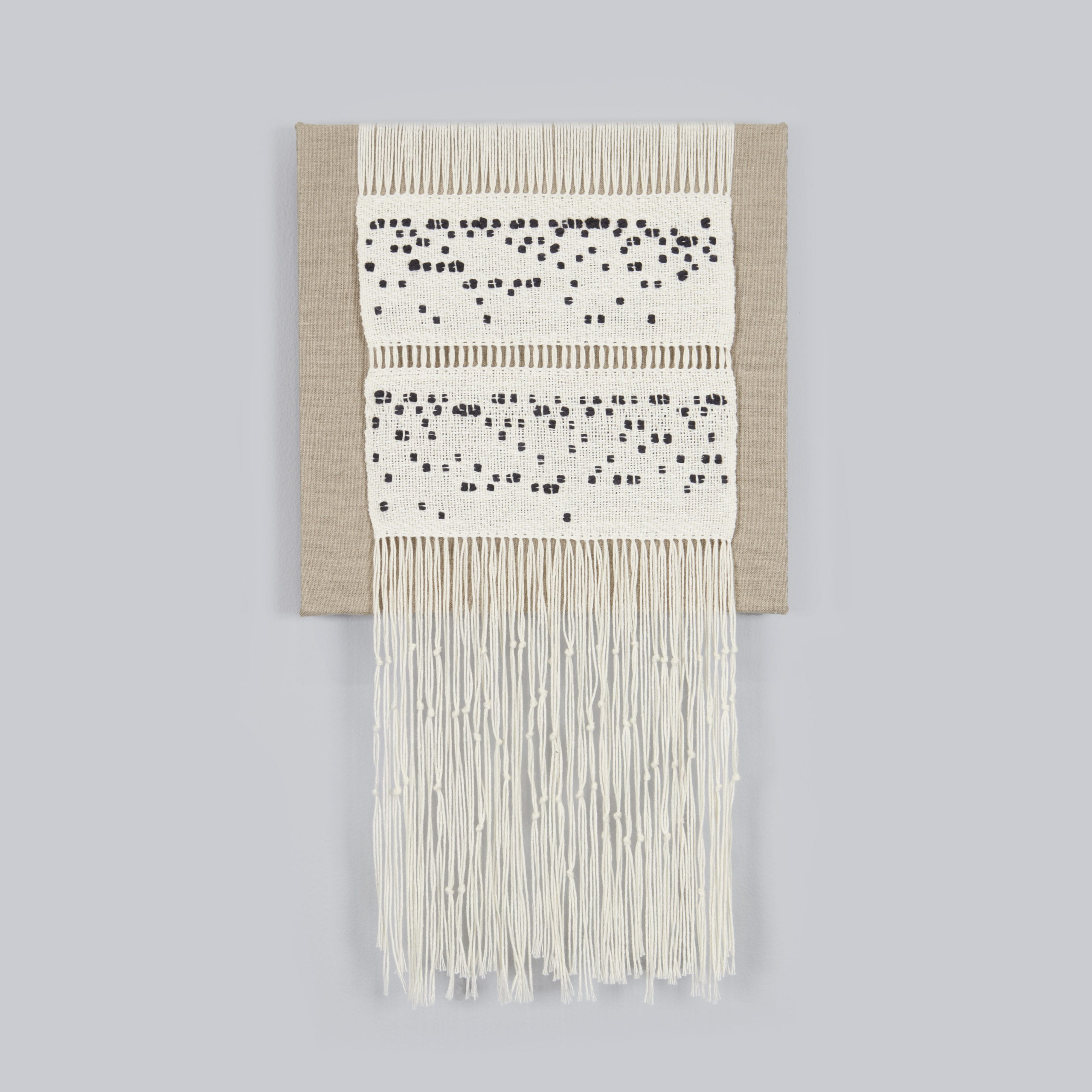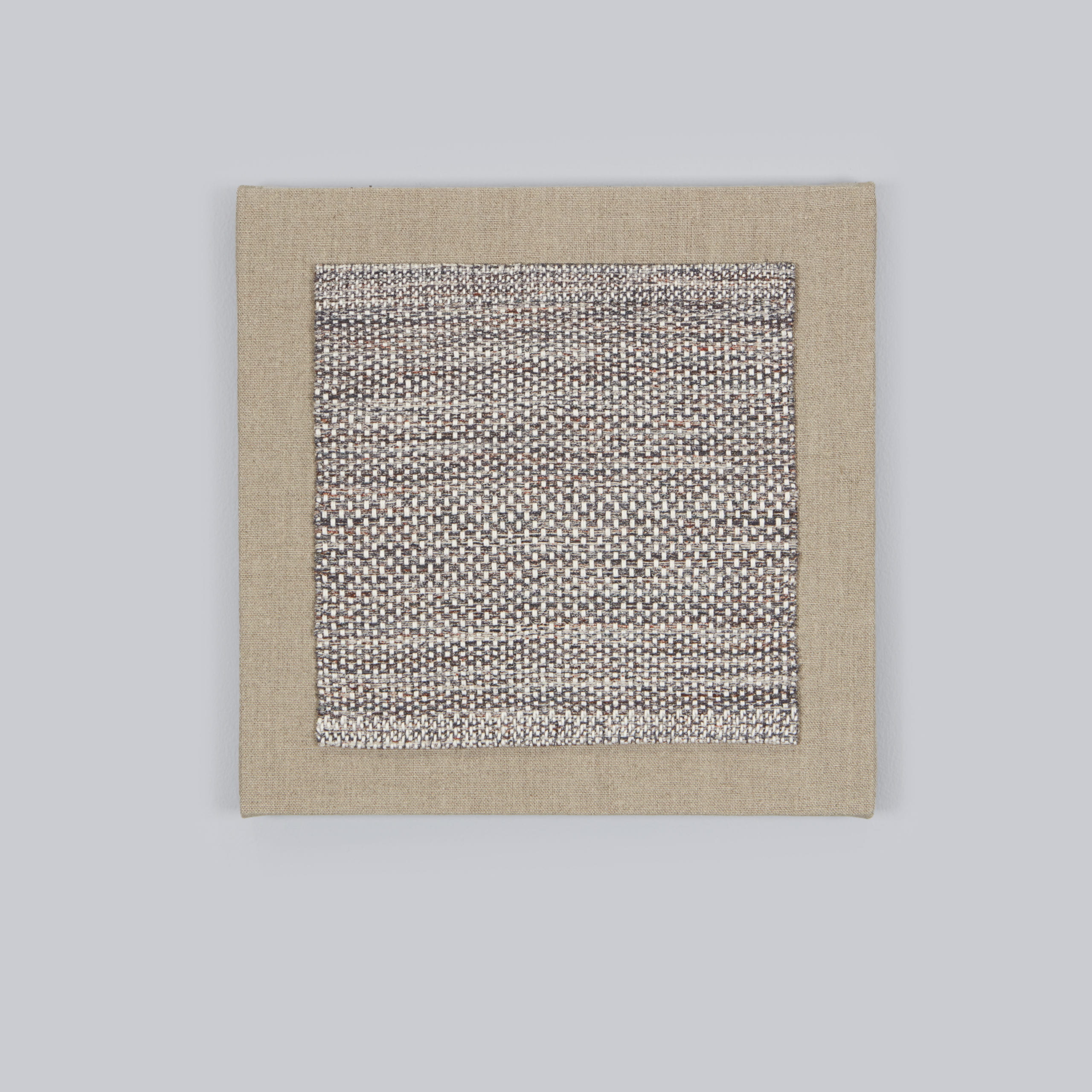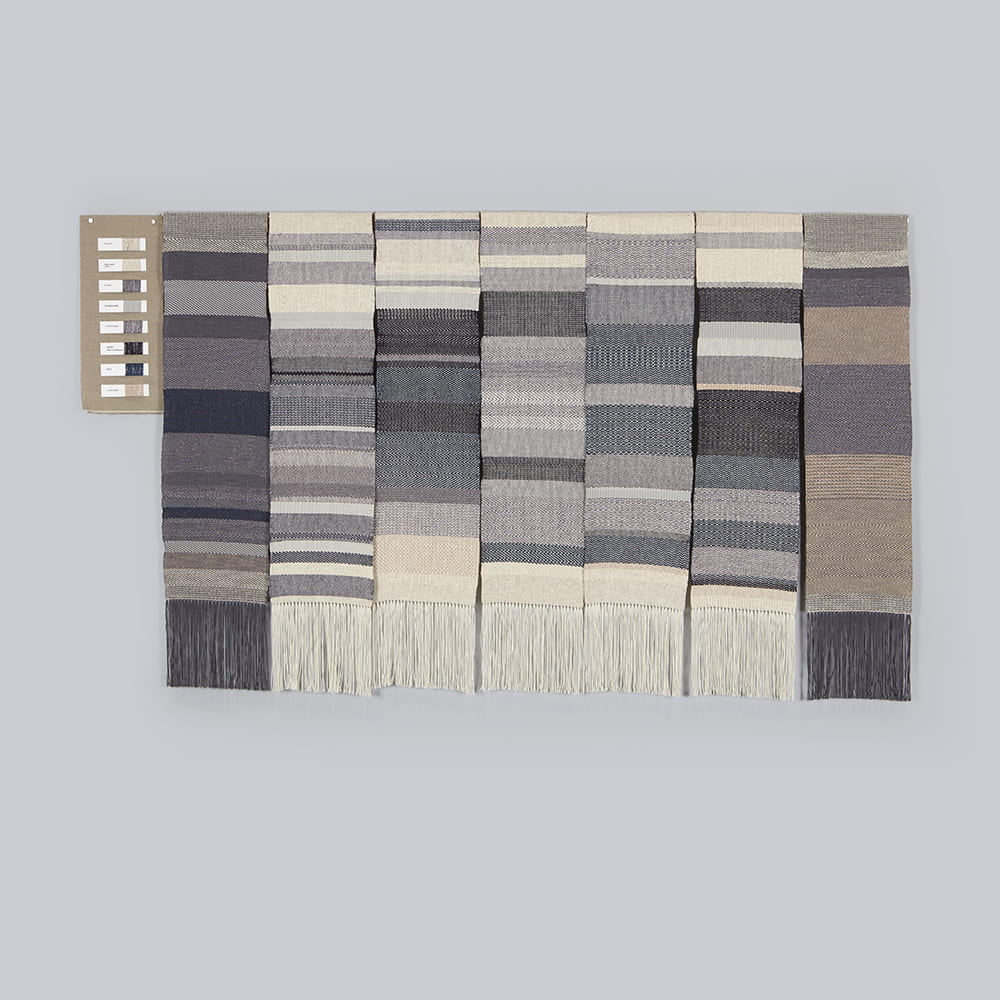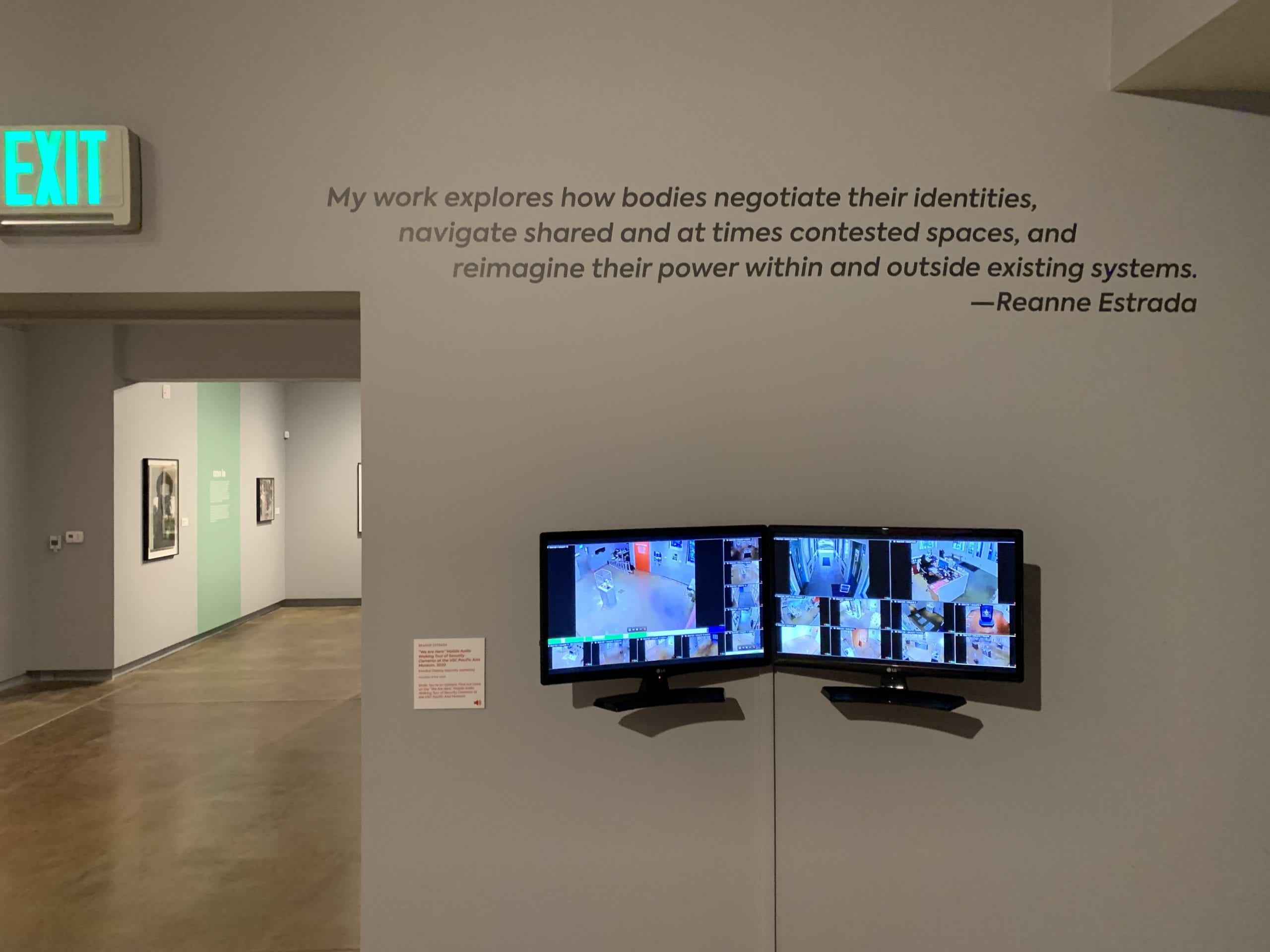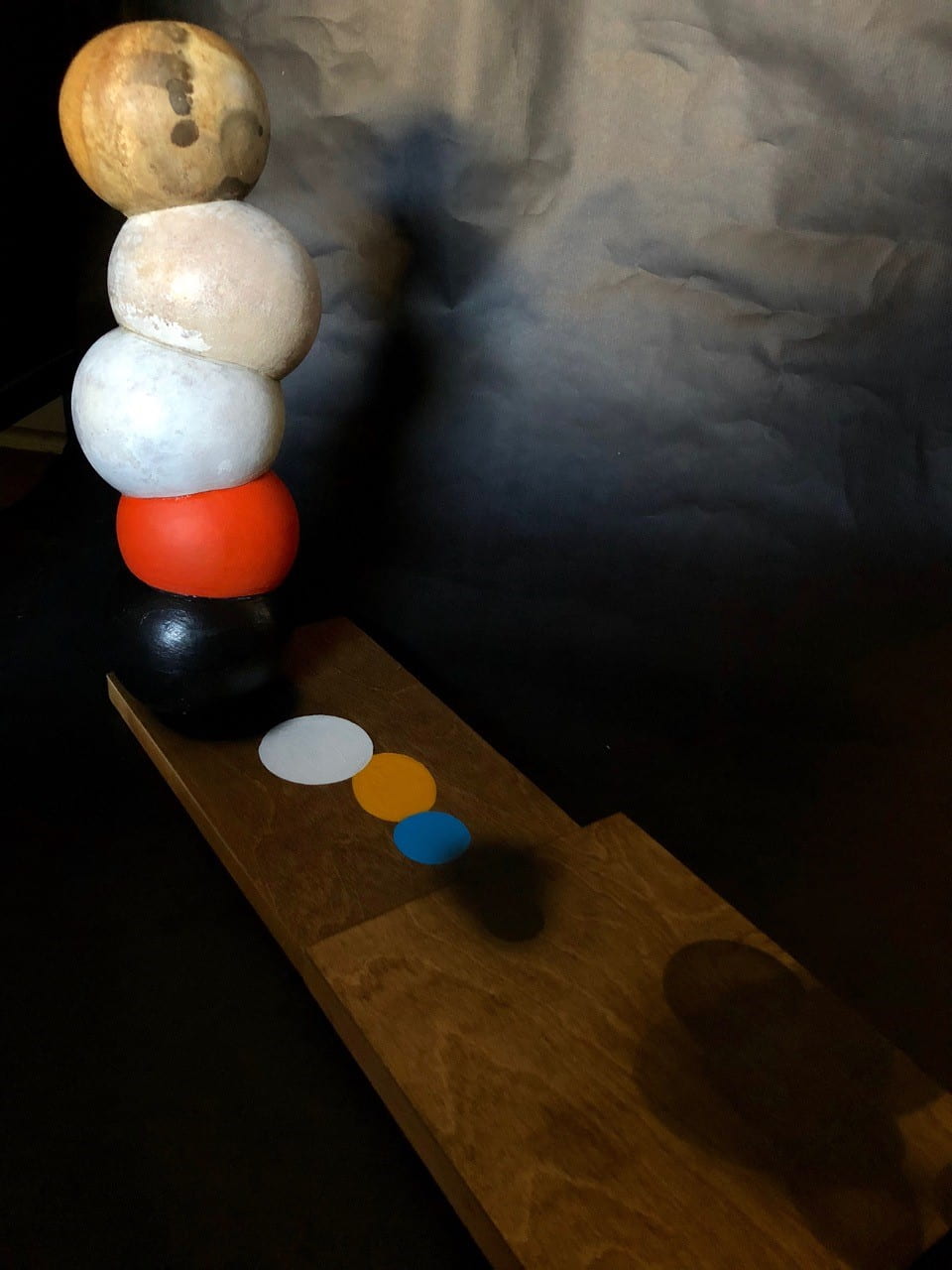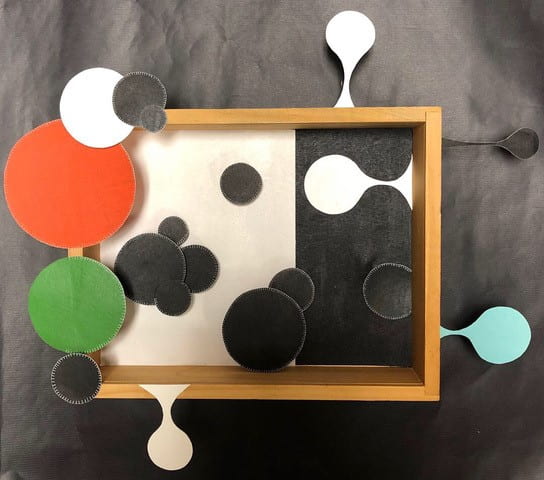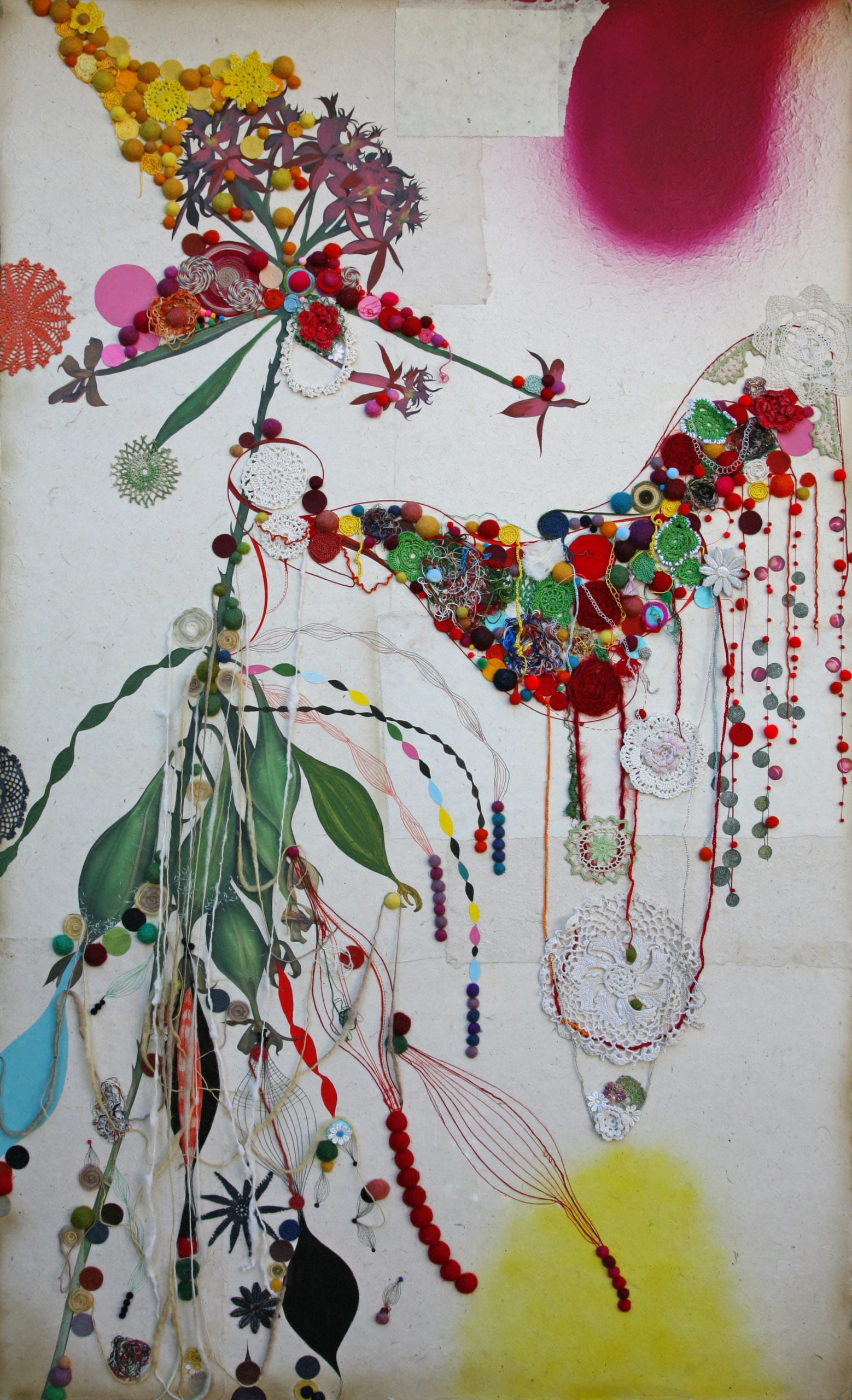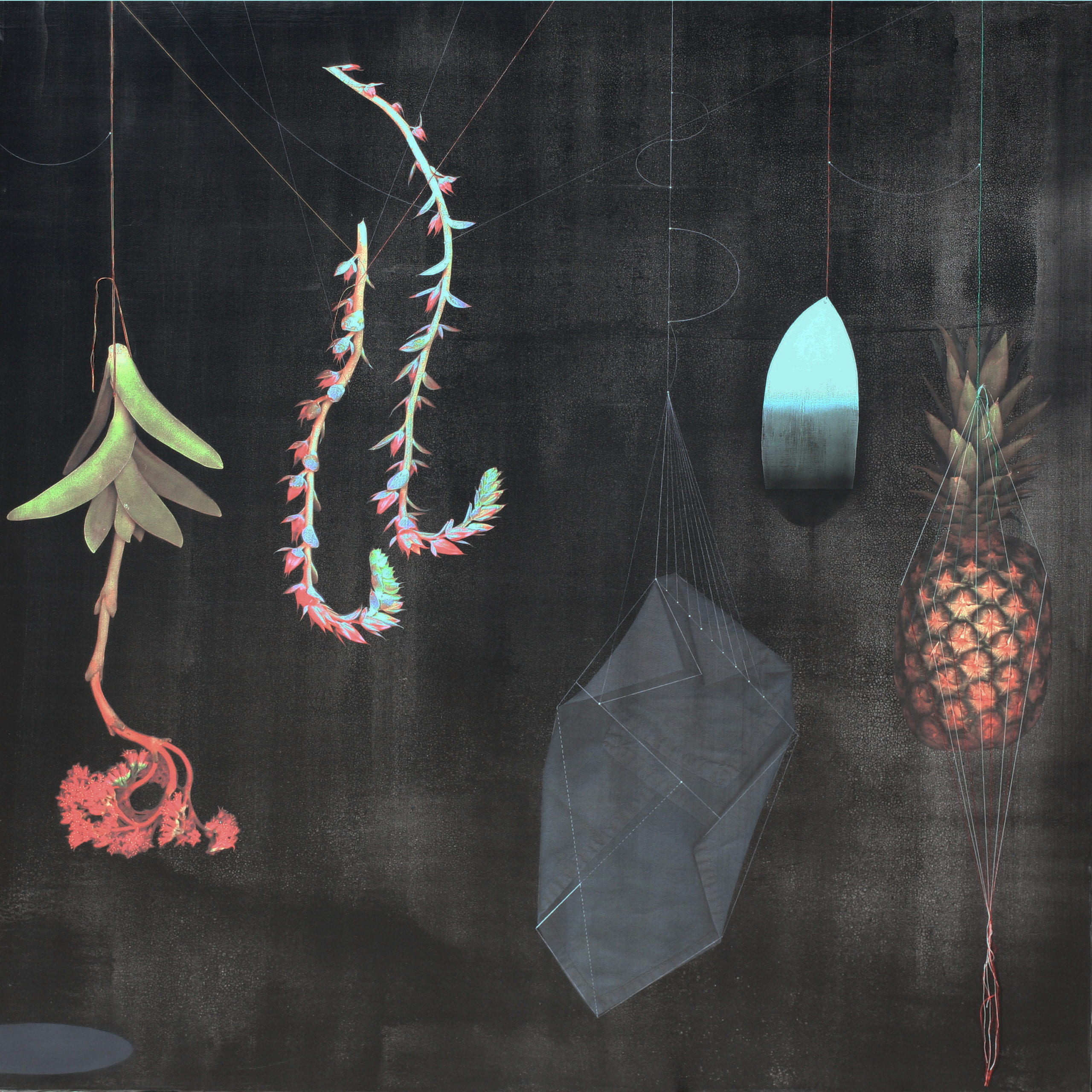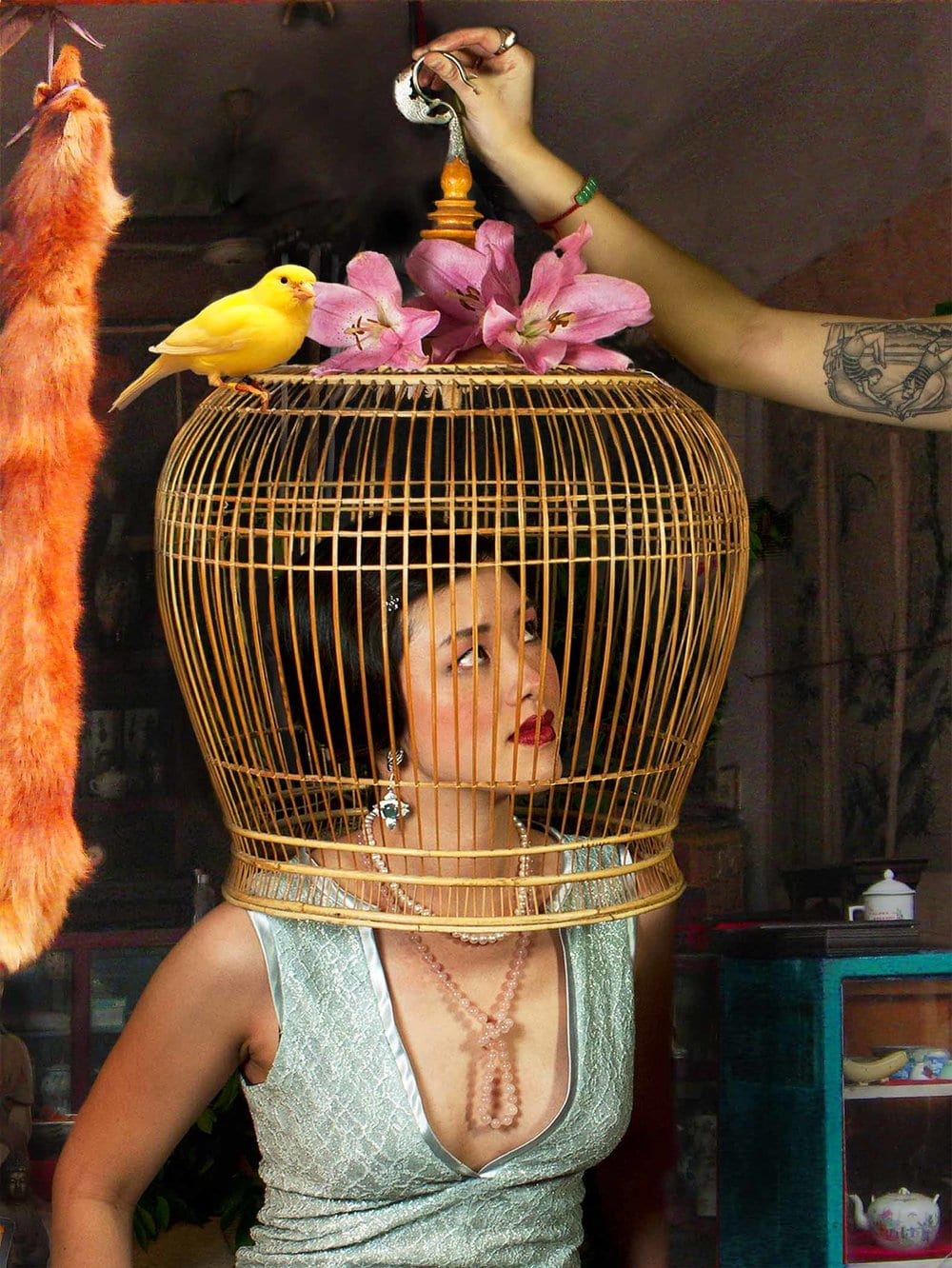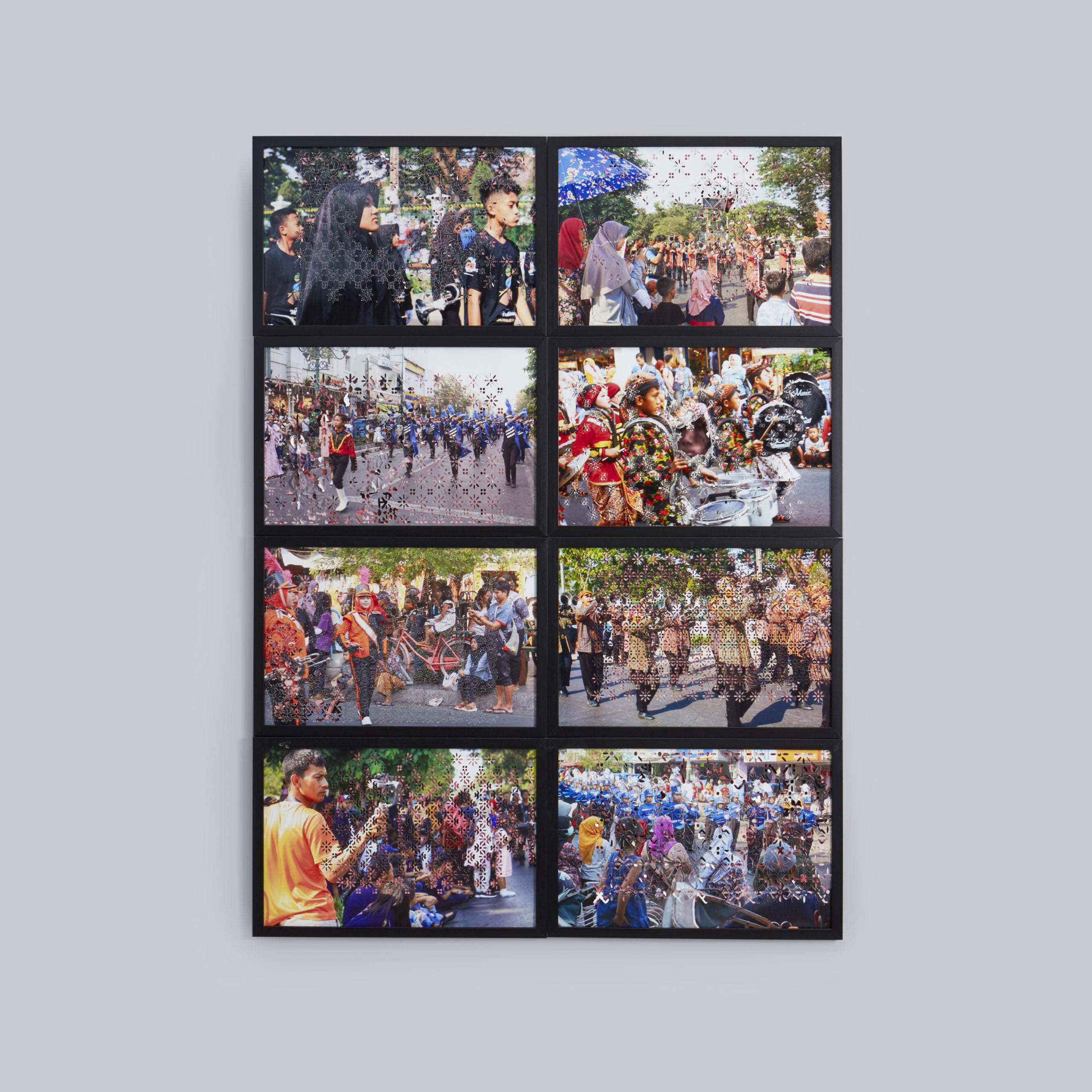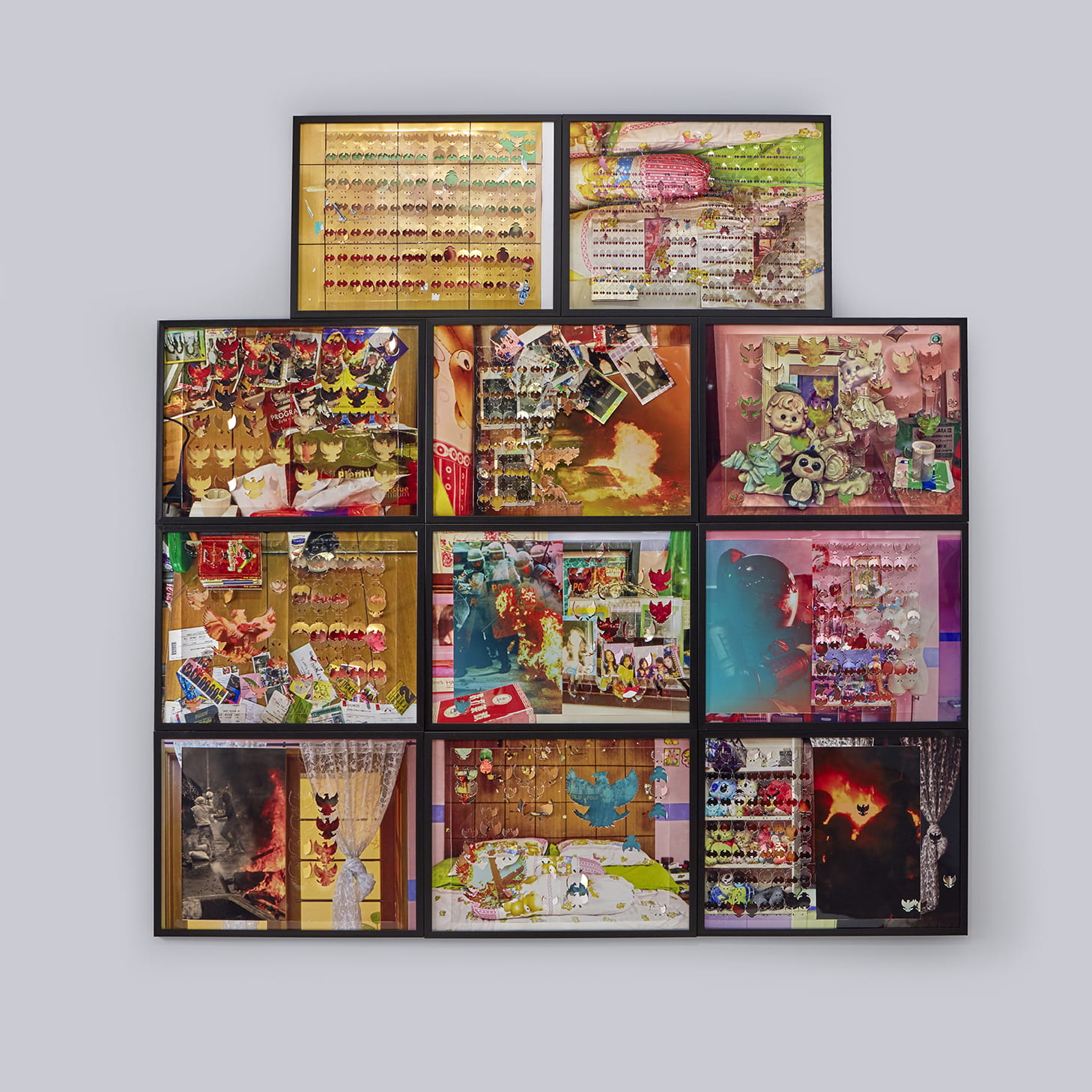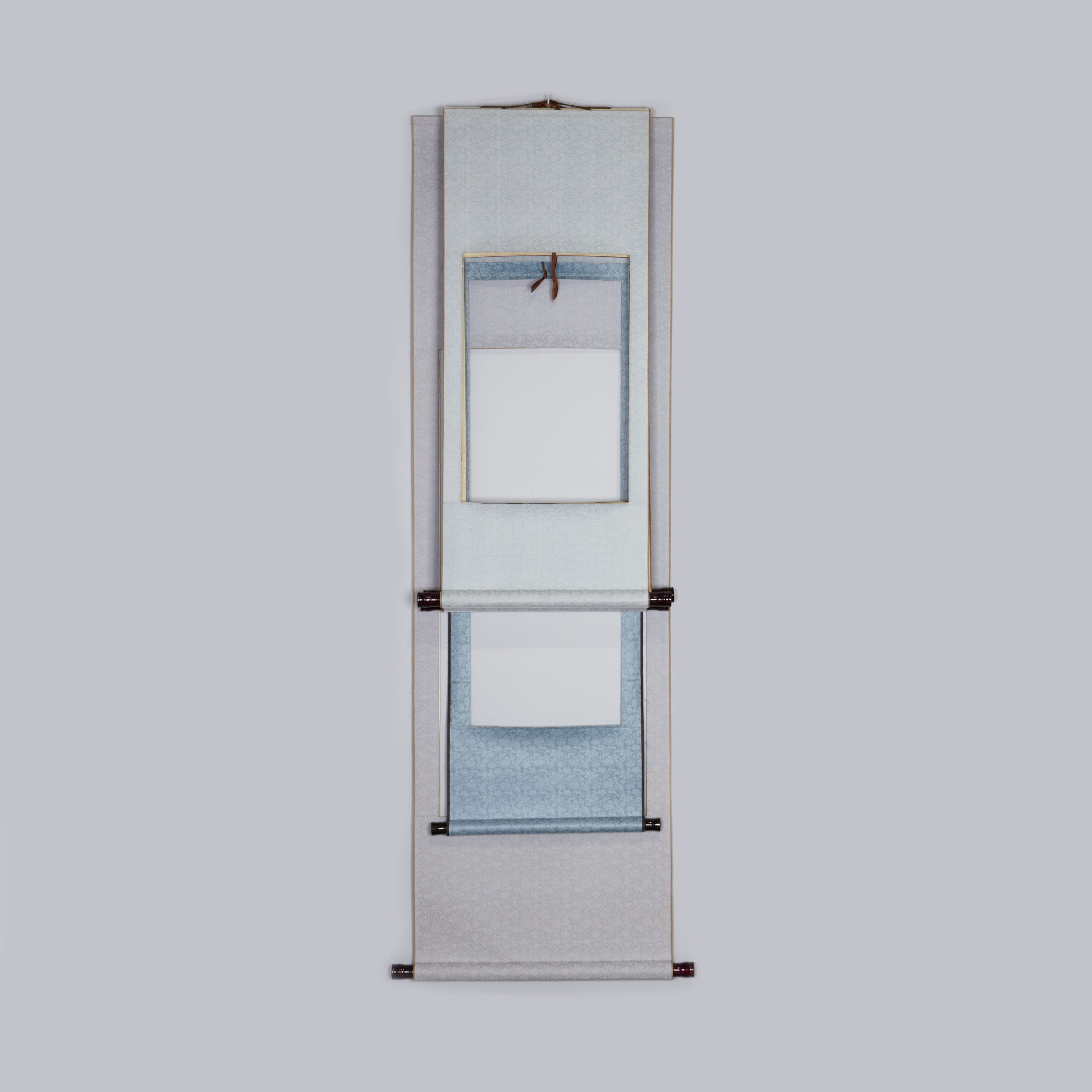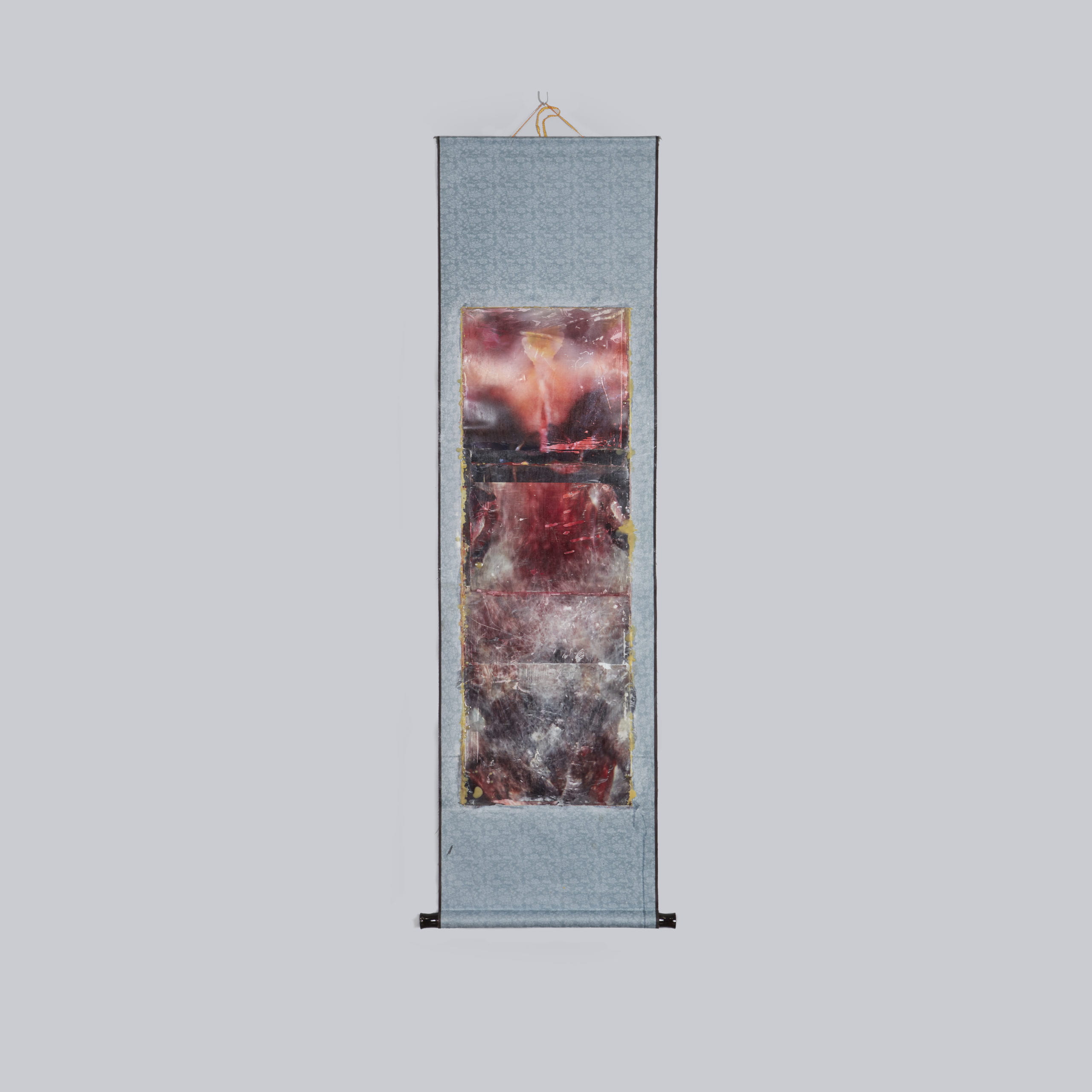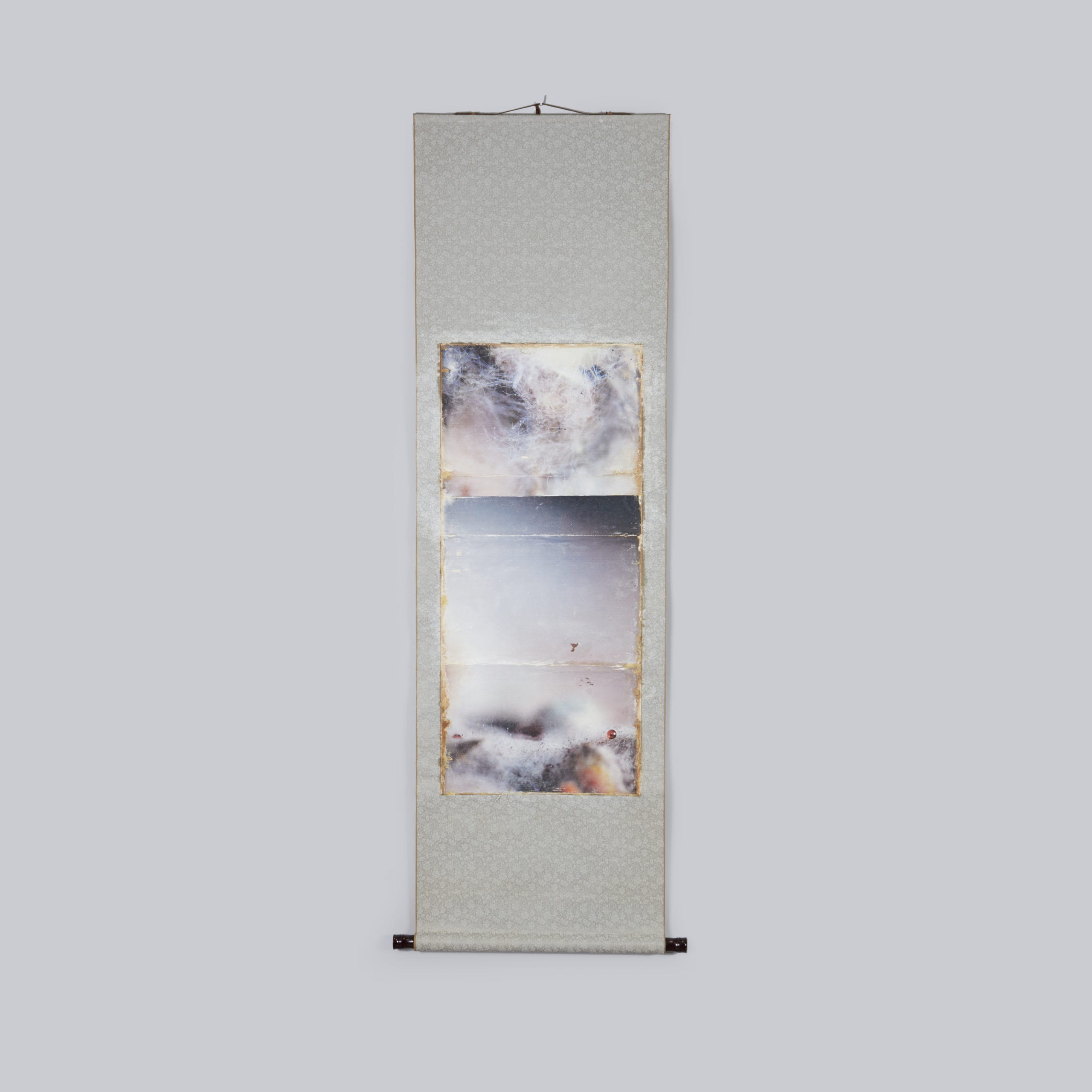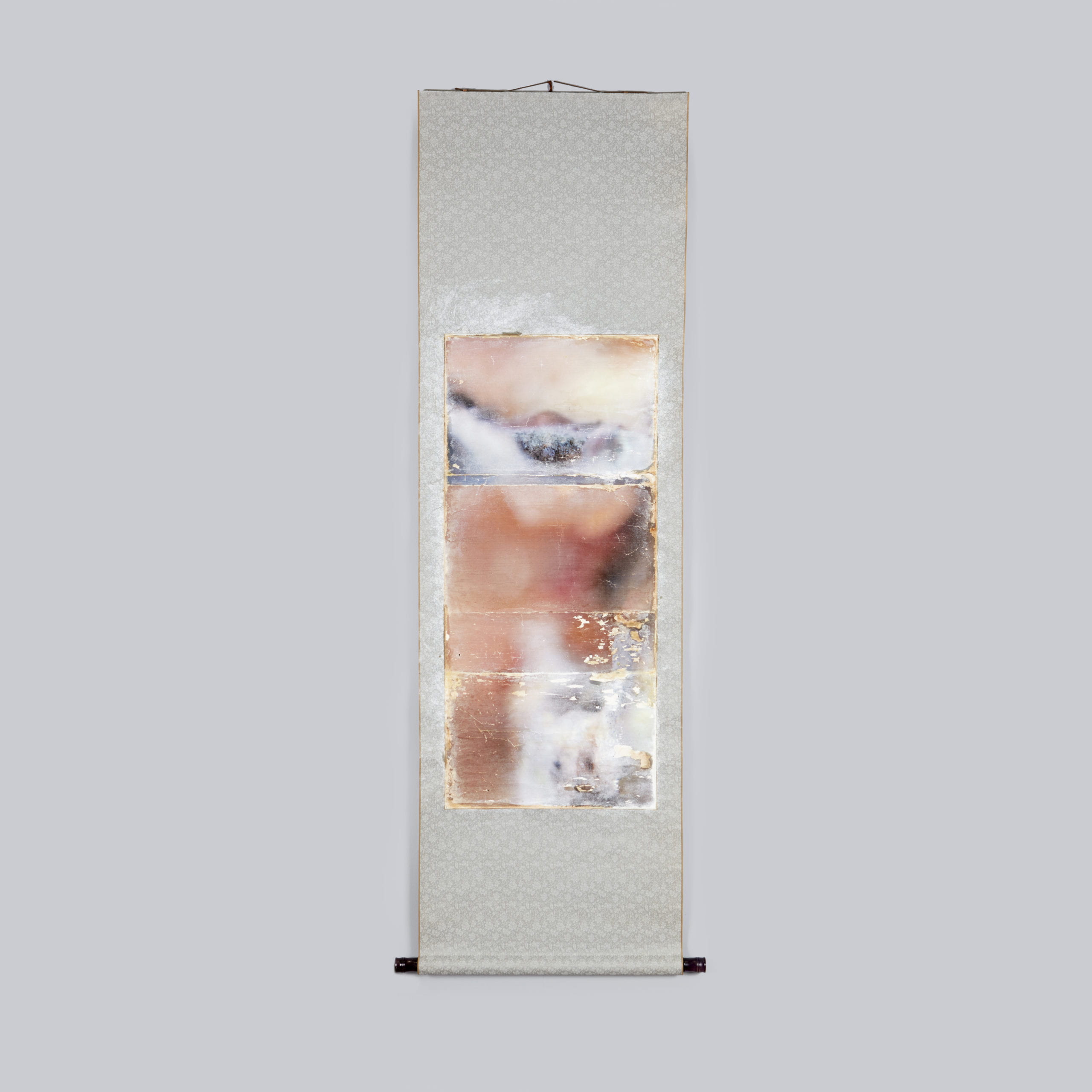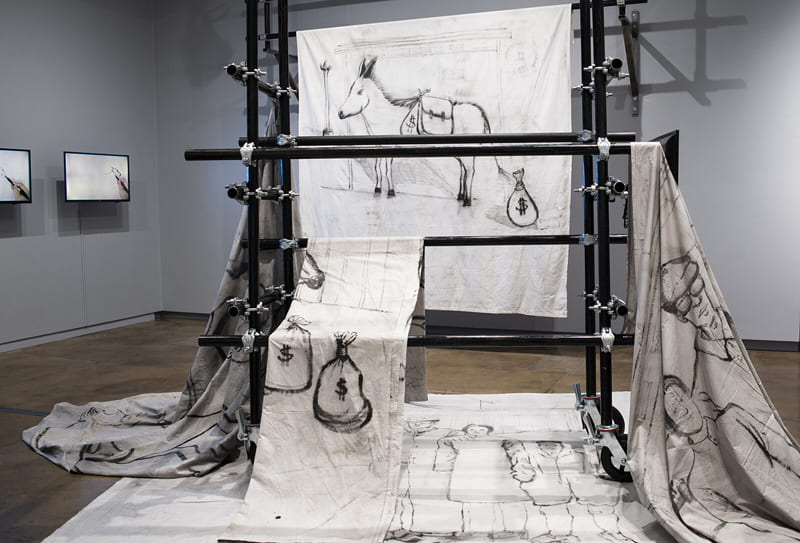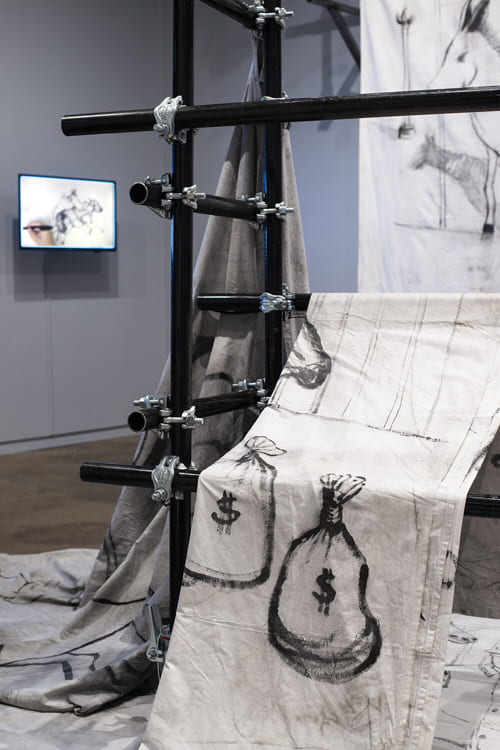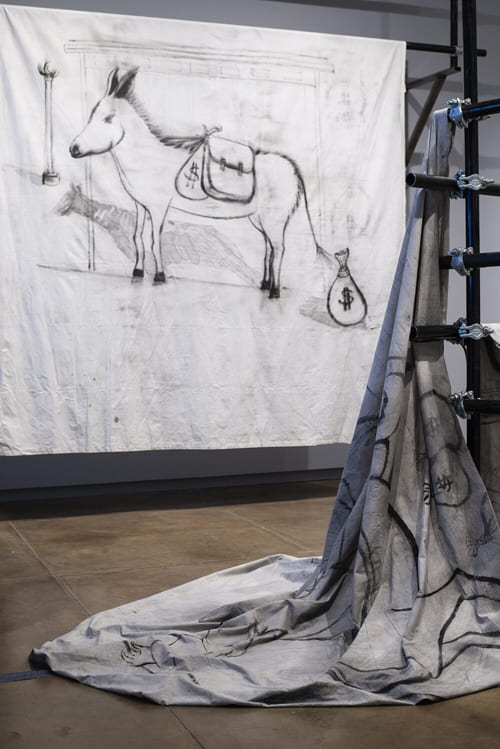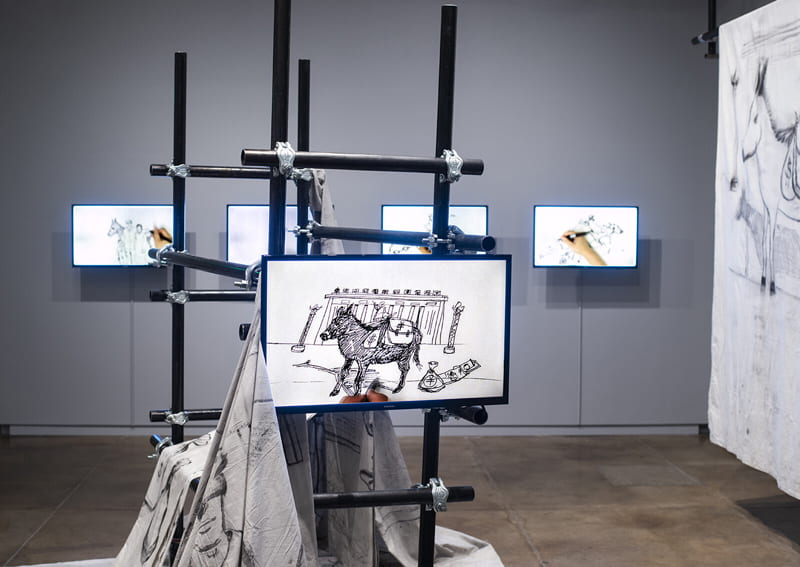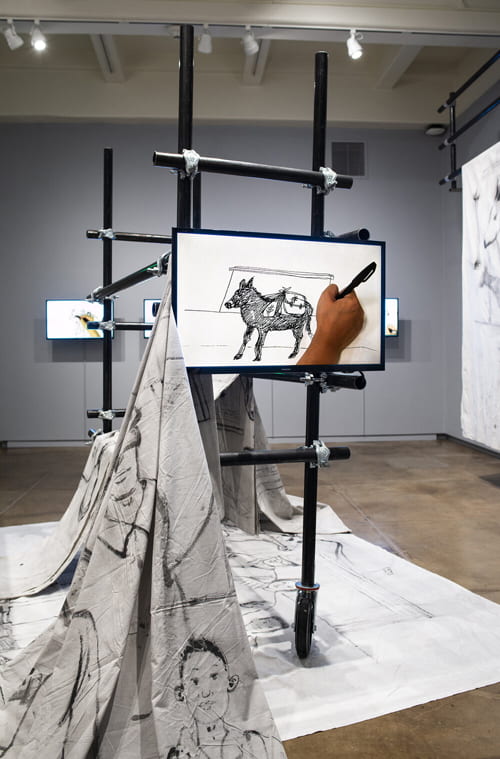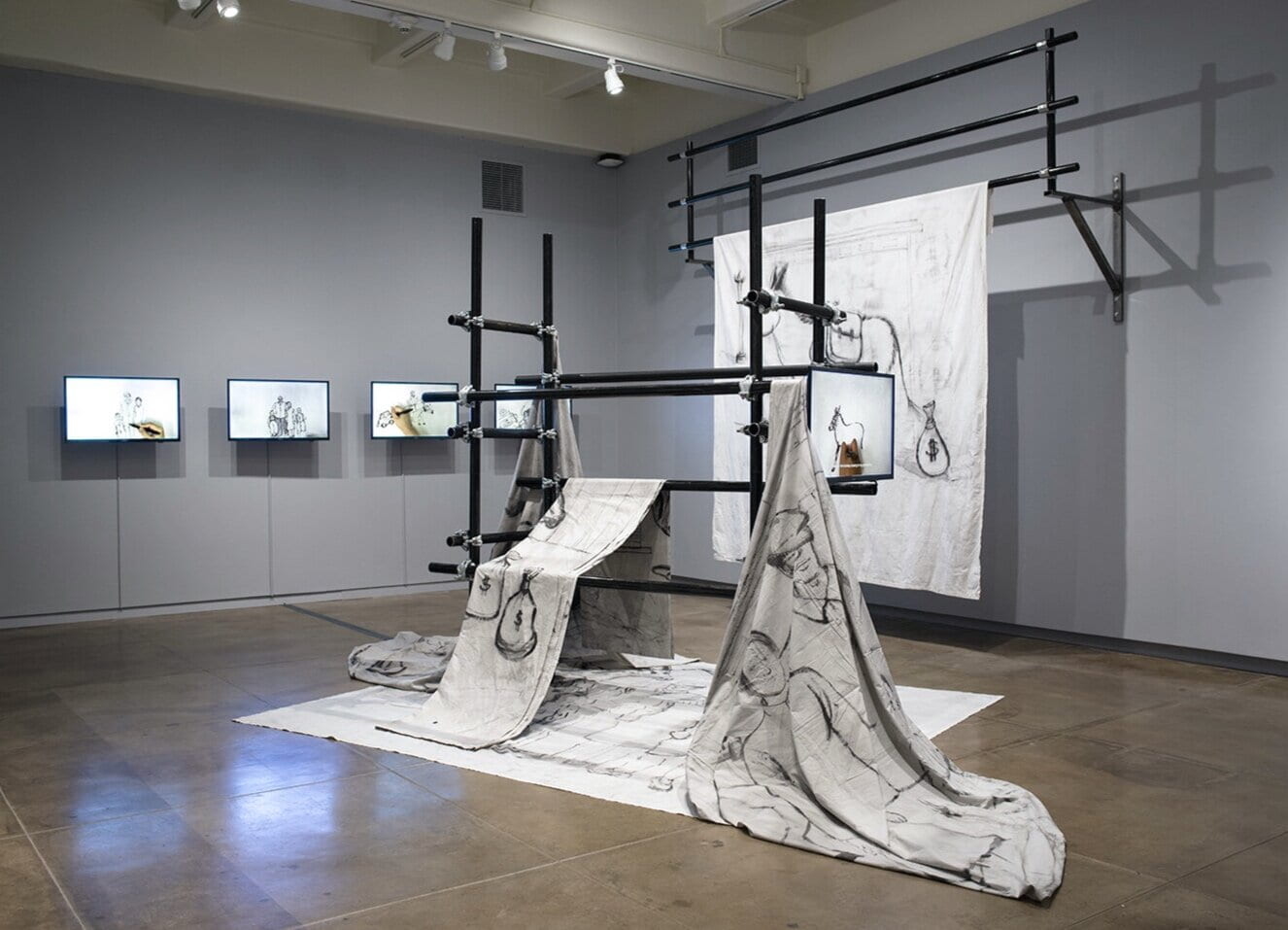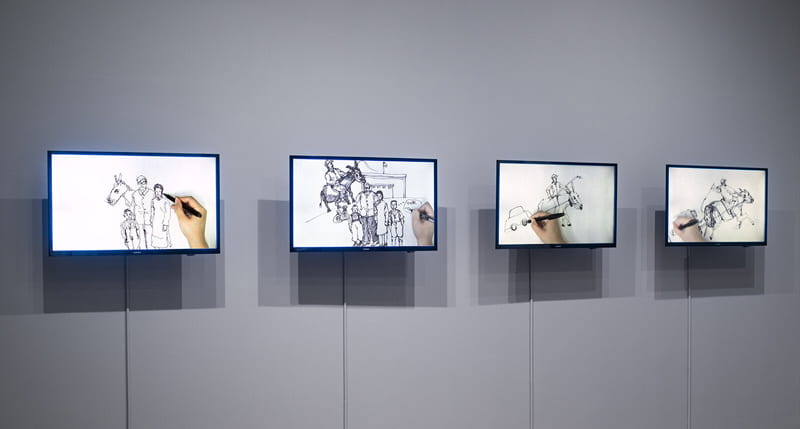
Asian communities in Los Angeles abound with diversity. A multitude of ethnicities and nationalities from across the Asian continent are present here. Residents have sought fresh new opportunities, arriving as refugees, economic migrants, students, or professionals. In celebration of these communities, USC PAM presents seven dynamic female contemporary artists who embody the vitality of our city’s Asian populations. Each of these artists speak to the fluidity of an individual’s sense of place and self. Their artworks spark important conversations about the creation of art, memory, and meaning in complex social and cultural spaces. The galleries are interwoven with narratives that give voice to L.A. while simultaneously speaking to the transnational reality of life in the twenty-first century.
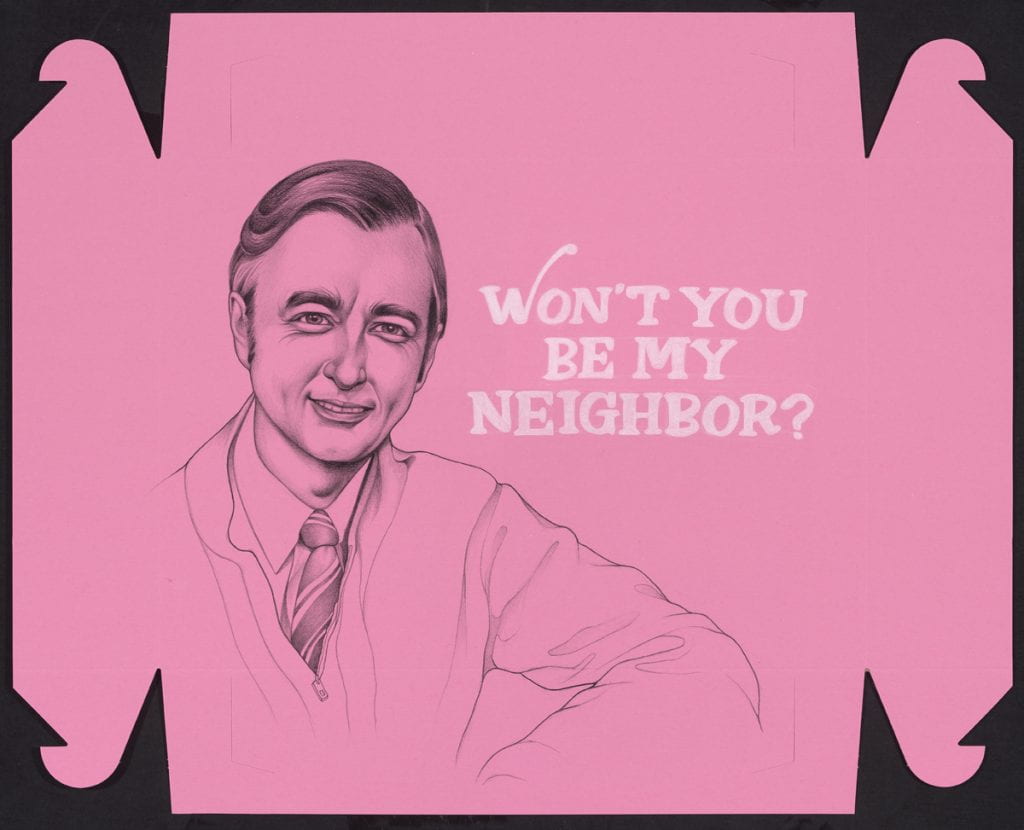
Mr. Rogers
Graphite on pink donut box
Courtesy of the artist
Becoming American cannot be painted in broad strokes. It is a personal experience that is complicated, messy, and certainly not easy. Understanding my family’s living history as refugees and inspired by research and interviews with people with a shared history, the series of drawings on pink donut boxes uncover the complex layers of cultural assimilation and forging new identities. It is more than just donuts and pink boxes. It is about being able to tell our own stories before they are told for us. It is about sharing our humanity when we are veiled by inhumanity. – Phung Huynh
Phung Huynh (b. 1977) creates art that inspires viewers to think about society’s role in forming how we see ourselves and each other. Huynh draws from her heritage of survival and migration as a Vietnam War refugee. Her artworks provide a glimpse into her experience and help investigate the shifting notions of cultural identity in an American setting. These pieces also create empathy in honoring the adaptability and self-preservation achieved by refugees.
Huynh’s exploration of the Southeast Asian refugee experience in Los Angeles forms the core of her work presented here. She reveals the resilient nature of refugees in shaping the Southern California cultural landscape. Pink donut boxes serve as visual connections to the donut shops that gave Cambodian refugees an opportunity to build a new life after fleeing genocide. The series of drawings on the pink boxes are sensitive portraits of refugees whose stories exemplify power and perseverance. In the portrait of Fred Rogers, we see a man whose compassion and heart helped new immigrants become American. Corresponding cross stitch license plates reference souvenir keychains, creating inclusivity and an opportunity for all Americans to find their names on these ubiquitous mementos.

Memory can be unreliable and reflects a continuous process of retranslation. Remembering the self is not a case of restoring an original identity, but a continuous process of “remembering,” of putting together moment by moment, or provisional and partial reconstruction. – Ann Le
Ann Le (b. 1981) begins her artistic process by exploring her family photo archive to honor the past and build artworks as a form of cultural protection for future generations. Born in San Diego to a family of refugees from Vietnam, Le encountered firsthand the impact of war and the strength of her family as they rebuilt their lives in America. Her layered images speak to this experience, drawing us in with their dreamlike qualities and leaving a lasting impact through their constructed dialogues.
The works displayed here represent several different series produced by the artist. Together, Le’s photomontages reveal complex constructions that contemplate the meaning and effect of war. She adamantly conveys that those affected by war will not be silenced as they piece together new versions of themselves amid unparalleled, irreversible change.

My work reveals hidden narratives and patterns embedded in identity, gender expectations, community, family, and culture. My process lies somewhere between science and art. Like a scientist, I methodically conduct experiments, gather data, and synthesize findings. But where scientists deal with facts, my data points capture human memories, emotions, and experience. I piece together the larger truth that these data points reveal, creating videos, new media, and textiles. – Ahree Lee
Above, Bojagi (Memories to Light) from Ahree Lee on Vimeo
Ahree Lee (b. 1971) investigates the past and sheds light on the present by uncovering once hidden narratives. Lee creates works that challenge viewers to consider representation and see the connection between contemporary experiences and those of previous generations. As a child of Korean immigrants raised in a typically American manner, Lee sees through the fractured world and poses questions about how to reenvision our past to create a new unity.
Lee’s artworks uncover personal links to ongoing inquiries about who and what are integral to social and technological change. The video Bojagi (Memories to Light) was inspired by Korean wrapping cloths pieced from scraps and passed from mother to daughter. These cloths functioned as one of the few modes of expression for women in a deeply patriarchal society.
Her handwoven textiles merge weaving and computer coding. Through research and process, Lee reveals a history of connection: the first computers were based on the technology of the loom. Women were instrumental in the development of computing, writing the first computer programs and filling the ranks of programming jobs in the technology industry’s early years. Yet when the computer industry became profitable and powerful, women were left behind and left to contemplate the meaning and value of “women’s work.”

Public performance at Love or Fear, presented by LA Freewaves, on Hollywood Blvd, September 7, 2019
My work explores how bodies negotiate their identities, navigate shared and at times contested spaces, and reimagine their power within and outside existing systems. – Reanne Estrada
Reanne Estrada (b. 1969) utilizes the body in space to question identity and its fragile nature. Born in the Philippines, Estrada moved with her family to California as a child. This experience emphasized the importance of community and the ways people renegotiate themselves in response to their environments. With a socially engaged artistic practice that includes collaborative and individual creative acts, her work explores systems and their effects on individuals as they negotiate their place in the world.
Estrada invites viewers to become part of her art. For We Are Here, she created artworks that challenge us to consider our experience of technology and surveillance and ask how we might assert greater control over our digital bodies and what is extracted from them. She explores systems of surveillance and provides social commentary on the tenuous relationship of people to larger systems of control, using her artwork as a catalyst for public good.
If I can represent my character in the artwork then I feel that I have successfully created an honest piece. – Kaoru Mansour
Kaoru Mansour (b. 1956) finds inspiration in her daily life. She grew up in rural Japan surrounded by nature and continues to look to the natural world in her paintings. Mansour tinkers with materials and images as she creates compositions and surfaces that are simultaneously sensuous and irreverent, personal and universal. Duality is a central component of Mansour’s creations. She balances opposition in her visual style and the themes she incorporates into each artwork.
Mansour’s artworks also reflect her parallel life as a musician. Her voice winds through the songs she creates in the same manner as the shapes, colors, and embellishments that dance across her canvases. Examination of the details in her artworks provides both a glimpse into Mansour’s mind and a rediscovery of the joys of colors, shapes, family, plants, and animals.
With my work, I want not only the viewer to know that they are never alone in any of the minute or grand of human experiences, but also to look at ideas of culture, inter culturalism, and identity both imposed and invented in a more expansive way. – Mei Xian Qiu
Mei Xian Qiu (b. 1964) expands from her personal history to develop visually rich artworks that challenge viewers to consider the boundary between illusion and reality. Qiu was born on the Indonesian island of Java to a Chinese minority family who fled persecution. Her parents gave her three names (Chinese, Indonesian, and American) as a protective act to prepare her for multiple futures. The two designations she uses for her artwork are rooted in those names: Mei Xian Qiu, on her birth certificate but illegal under Indonesian law, and Cindy Suriyani, from “Cinderella” and the Malay Indonesian name meaning “sunny.”
In the aftermath of extreme anti-Chinese riots, her family immigrated to the United States and continued to move between the U.S. and Indonesia throughout her childhood. As she passes between cultures, Qiu navigates the three aspects of herself and continues to explore her transnational character. Qiu plays with archetypes and creates layered artworks that are rich in metaphor and meaning. Through photography, she treads a precarious line and speaks to the displacement she experiences as a result of her multiple heritages.
Three series are featured in this gallery; each reflects the artist’s experience traveling between China, Indonesia, and the U.S. Let a Thousand Flowers Bloom references Mao Zedong’s 1956 speech commencing a short-lived artistic and intellectual renaissance in China that ultimately resulted in a crackdown on independent thought. Homecoming: Once we were the Other was born from Qiu’s return to her mythical homeland. Through excavation of waste, Qiu captures a macro landscape that embraces the tension she felt during a residency in Beijing. In Dewi Cantik (Pretty Darling), Suriyani reexamines the Java of her childhood. Surrounded by rich colors, upbeat energy, and family stories, she cuts through layers of photographs to uncover the dichotomy between difficult realities and the comforting fictions used to cover them.
Personal becomes political. – Sichong Xie
Sichong Xie (b. 1991) creates art through an intensely personal and deeply introspective practice. Motivated by her family’s history and her experiences growing up in Xi’an, China, Xie builds multimedia artworks and performances that speak to the impact of memory. She evokes feelings of isolation and wonder through her art. At the same time, she investigates the relationship between the state and the individual and her body’s attributes as she moves against various backdrops in both China and the U.S.
The multi-channel, multimedia installation Xie constructed explores the impact of art and the fluidity of memory as a form of protection. Her grandmother is the family’s only witness to an event that had great effect on her grandparents: her grandfather’s political illustration, now destroyed, that landed him in labor camp for two years. Xie recreates the illustration many times with the aid of her grandmother’s ever changing memory. Like much of Xie’s work, this piece presents an open ended question about survival, the stories that connect generations, and the transient nature of life.

